A Massacre in Australia, and Rob Reiner Is Found Dead in ‘Apparent Homicide’

© Matthew Abbott for The New York Times

© Matthew Abbott for The New York Times

© Jean-Baptiste Lacroix/Agence France-Presse — Getty Images

© Pool photo by Christophe Ena

© Andrew Harrer/Bloomberg

© Jamie Kelter Davis for The New York Times

© Jovanny Hernandez/Milwaukee Journal Sentinel, via USA TODAY NETWORK, via Imagn Images

© Vincent Alban/The New York Times

© Michael Kappeler/Picture Alliance, via Getty Images

© Claudio Santana/Getty Images

© Hannah Yoon for The New York Times
As President Donald Trump’s mid-decade gerrymandering push in Republican states hit a roadblock in Indiana last week, Democrats looking to make up ground in blue states got some unwelcome news: Fewer than one-third of Maryland residents view redrawing the state’s congressional lines as a “high” priority, per a survey out Monday.
Just 27 percent polled by the University of Maryland, Baltimore County, labeled redistricting a top issue, trailing far behind the cost of health care (77 percent), the quality of K-12 education (75 percent) and reducing crime (73 percent).
The survey comes as lawmakers in the Old Line State grapple over whether to push forward an effort to redraw congressional lines to give Democrats a chance to flip the state’s lone Republican-held seat. Maryland lawmakers are slated to convene for a special legislative session on Tuesday, though they made clear redistricting will not be on the agenda.
A similar push Trump championed in Indiana would have eliminated up to two Democratic-held seats; it was soundly rejected by that state’s Republican-led state Senate last week in a sharp rebuke of the president by members of his own party. Their opposition also relieved pressure mounting in some blue states, including Maryland, for state lawmakers to forge ahead with their gerrymandering counteroffensive.
For several months, Maryland Gov. Wes Moore, a likely 2028 Democratic presidential hopeful, has been urging lawmakers to consider redesigning the state’s maps, but has been stymied by state Senate President Bill Ferguson, a fellow Democrat who thinks the move could jeopardize the strength of Maryland Democrats’ congressional dominance. Democrats control seven of the state’s eight congressional seats.
“This is not a huge priority for Maryland voters,” Mileah Kromer, the director of the university's Institute of Politics, which conducted the survey, said. “Perhaps one of the reasons it hasn't really caught on as a major priority is because over the last year, Maryland voters continue to express concerns about the economic situation in the state.”
Earlier this year, state lawmakers passed measures raising taxes and fees by $1.6 billion — and are bracing for lingering negative repercussions from the longest federal government shutdown in U.S. history.
The survey of 801 Maryland adults, the majority of whom were registered voters, found 28 percent of respondents said the Maryland congressional lines were drawn fairly, compared to 41 percent who said they were drawn unfairly. Twenty-nine percent did not have an opinion.
When broken down by party affiliation, responses show variance in opinion over how Maryland’s maps are currently drawn and whether mid-decade redistricting should be taken up by the state legislature ahead of the 2026 midterms, with control of Congress at stake.
Among Democrats, 37 percent said the state’s congressional maps are drawn fairly. And among the majority who believe otherwise, 18 percent said the lines favor Democrats and 10 percent said they favor Republicans.
Just 17 percent of Republicans surveyed said Maryland’s congressional lines are drawn fairly. Among those who view the state’s maps as unfair, 63 percent said the lines favor Democrats, while just 3 percent contend they favor Republicans.
While high numbers of both parties said they were paying at least some attention to the redistricting debate — 61 percent of Democrats; 71 percent of Republicans — their views of what to do about it also broke along party lines.
Maryland Democrats’ views of mid-cycle redistricting showed that nearly an equal percentage said they don’t like it and it should not be done — 25 percent — compared to 28 percent who said they don’t like it but believe it is necessary. Just 6 percent of Democrats support it but think it’s the wrong thing to do, compared to 32 percent who said they like it and mid-decade redistricting should be done.
Among Republicans, 67 percent said they don’t like it and mid-decade redistricting should not be done compared to 9 percent who consider it necessary. Fewer than 10 percent of Maryland Republicans said they like it, but it’s the wrong thing to do or that they like it and lawmakers should move forward with it.
The poll was funded by the College of Arts, Humanities, and Social Sciences at the university. It was conducted between Dec. 2 and 6 and has a 3.5 percent margin of error.


© Rod Lamkey Jr./AP

给你 30s,介绍一下今天你的 OOTD 吧。
一向温文尔雅、只穿基本款的苹果 CEO Tim Cook,在他的「个人 ID 视频」里,穿上了大号羽绒服,戴着镶钻牙套,对着镜头作出了最狠的 Gangsta 匪帮姿势。
最神来之笔的是,他像掏枪一样掏出了一个……德州仪器计算器。
▲视频来源:https://x.com/ReflctWillie/status/1997819640874205685
很多人看到这个视频都欲罢不能,一镜到底的展示也太过瘾了,一遍遍根本停不下来。视频作者把好莱坞大片级别的运镜语言,套用在一个荒诞的内容上。形式的高级感和内容的滑稽感,让这个 AI 视频没有那些普遍存在的廉价特点,很快在社交媒体上火起来。
立马就又有了马斯克的版本。
▲ 视频来源:https://x.com/VibeMarketer_/status/1999227084250448083
作者很细心的给出了完整的制作流程,通过使用底片印样方式的提示词(Contact Sheet Prompting),来获取到一套 6 张图片,背景一致、人物表情和服装一致,但是动作不同的照片组合。
▲ 3×2 的胶片印样
所谓印样,是最早在胶片时代,摄影里使用的一种缩略图版的照片索引页;现在把这样的概念用在 Nano Banana Pro 里,就是充分利用它的一致性能力,一次性生成一系列风格不同、角度不同的视频截图,然后再通过首尾帧来生成视频。
Nano Banana Pro 最多能一次性生成,包含 9 个以上关键帧的完整印样,每一帧图片都保持了出色的角色、细节和叙事一致性。即便是分别生成,Nano Banana Pro 也能根据上传的参考图片,自动填补图片内容,确保叙事一致性。
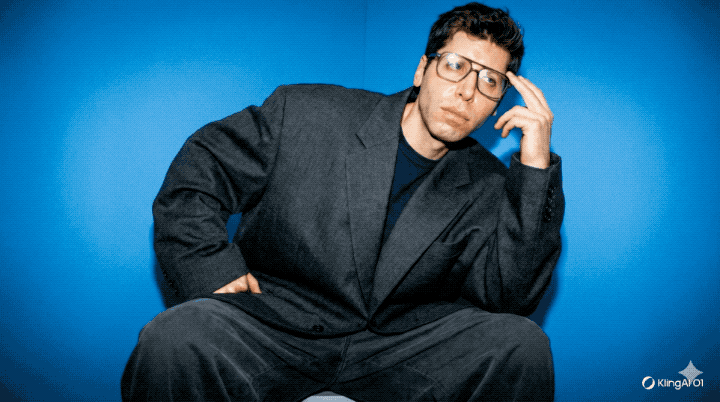
▲ 首尾帧视频生成,提示词:一镜到底的拍摄,摄像机平稳且缓慢地推进,聚焦在人物的眼镜上,同时始终将主体保持在画面中。主体的动作极小且谨慎。
有了图片之后,我们就可以通过首尾帧转视频的方式,将这几张图片整合起来,可灵、Veo 3.1、Hailuo、剪映等视频生成模型和工具,都可以轻松做到。
值得注意的是,像 Sora 2 目前是不支持上传这种有真实人脸的图片,马斯克的 Grok Imagine 也仅支持首帧转视频,综合下来,我们还是推荐使用 Google Veo 3.1、剪映里的即梦、还有快手可灵来完成。

▲Grok 图片转视频,默认生成的内容,不明所以
在这位视频博主给出的指南里,他使用了 Nano Banana Pro 和可灵来完成,并且它开发了一整套工具,让我们可以自由地实现各种人物的替换。
▲ 视频来源:https://x.com/ReflctWillie/status/1998720751806066916
根据他分享的工作流,由于这个视频和库克那个基本类似,所以它只需要修改输入的三张图片,以及做一些细微的调整。例如从口袋里掏出来的是 GAME BOY 游戏机,还有更符合这个人物特点的元素,库克是镶嵌着苹果股票代码 AAPL 的大金牙,美联储的主席鲍威尔则是戴上了 FED 的金戒指。
▲项目地址:https://github.com/shrimbly/node-banana
目前他把这个项目放在了知名开源平台 GitHub 上,如果你喜欢自己折腾的话,把项目下载到本地,输入自己的 Gemini API,也可以直接套用这个流程。
我们也尝试了这个自动化的项目,生成了几张图片,相比较在 Gemini 网页或 App 内生成,确实能方便不少。我们不需要反复的上传图片,而是可以直接选择需要使用的图片,直接修改提示词,将整个操作流水线化。
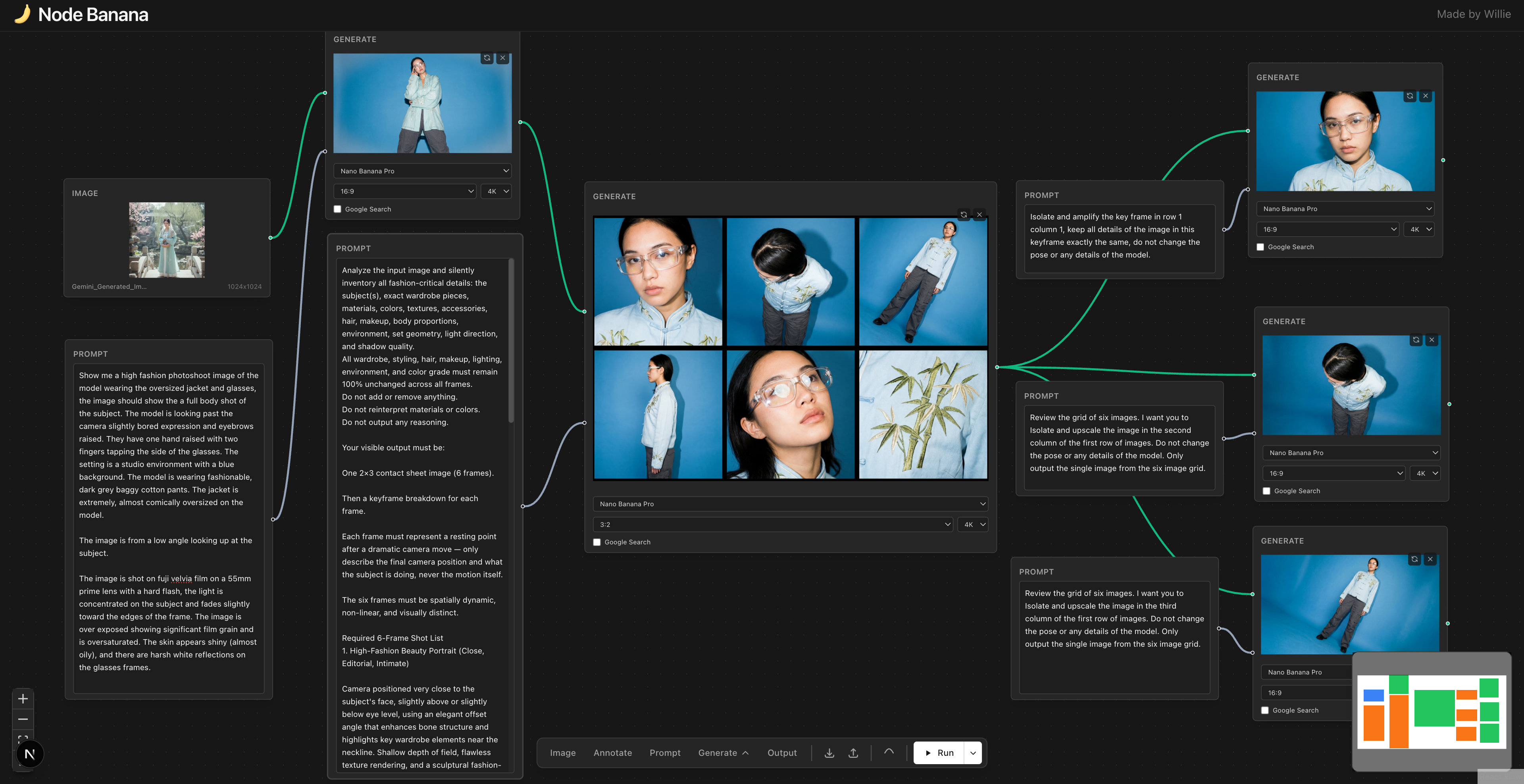
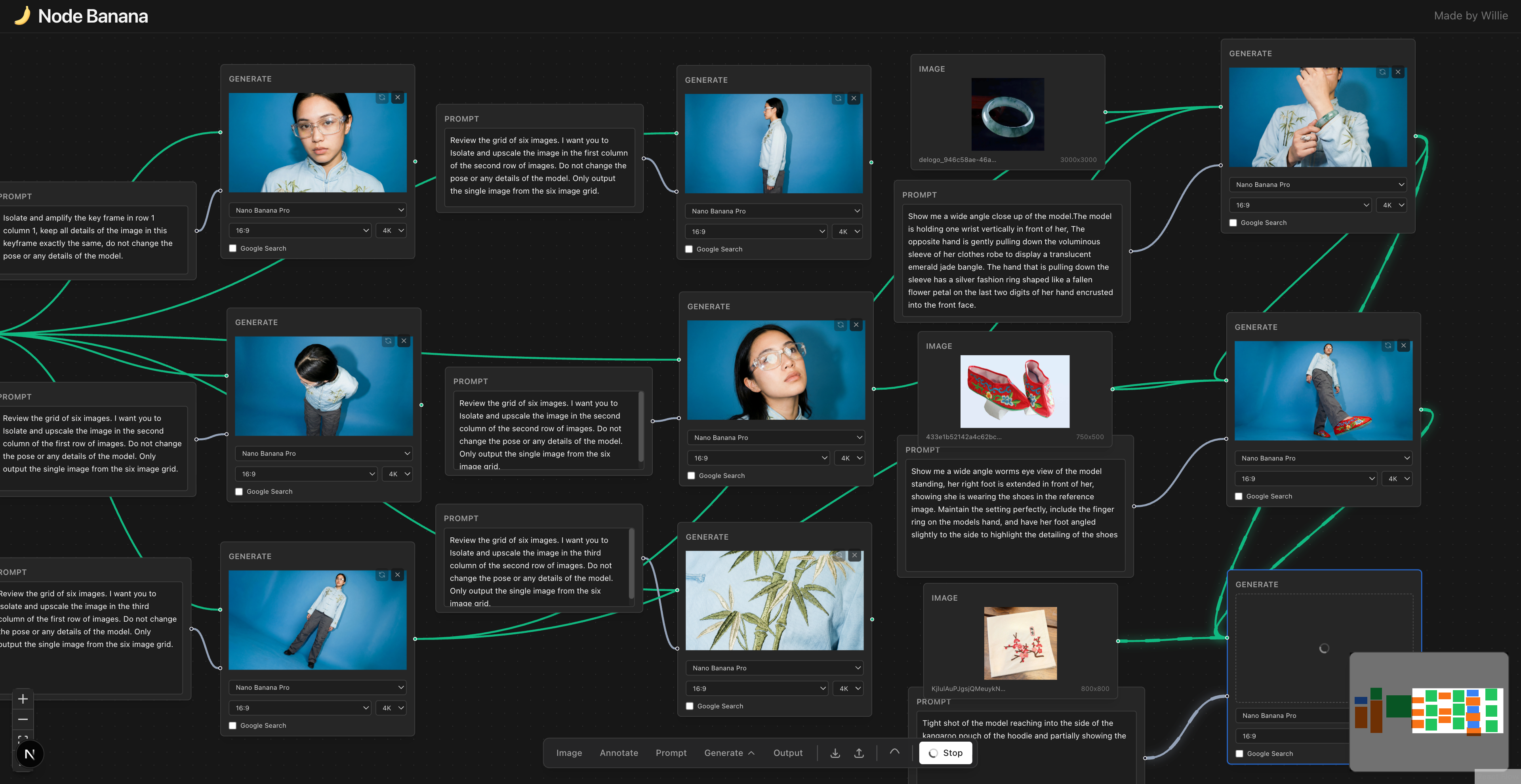
不过,没有 API 也没关系,下面跟着我们的详细步骤,就用 Gemini 网页版一样能做到。
找一张自己的照片,喜欢的潮牌衣服,还有酷炫的眼睛。我们这里用才情高绝、生性孤傲、多愁善感的林妹妹来举例,看看她的 OOTD 时尚大片会是怎么样。
这里我们直接用 Nano Banana Pro 生成了一张林黛玉的照片。

▲提示词:Subject: A hyper-realistic high-fashion portrait of Lin Daiyu from Dream of the Red Chamber. She has a fragile, melancholic beauty, pale skin, and her signature “knitted eyebrows” (frowning slightly). She looks distinctively sorrowful and intellectual. Attire: Wearing exquisite, high-end traditional Qing Dynasty couture (Hanfu style). The fabric is layered translucent silk and organza in pale bamboo-green and moon-white. Intricate embroidery of falling petals. She wears a jade hairpin. Setting: Inside a modern, minimalist professional photography studio. A solid dark grey or textured canvas backdrop. Lighting & Camera: Cinematic studio lighting, Rembrandt lighting to accentuate her cheekbones and mood. Softbox lighting, sharp focus, shot on Hasselblad X2D, 85mm lens. Deep depth of field. Style: Vogue China editorial, ethereal, elegant, sorrowful, oriental aesthetics, avant-garde fashion photography, ultra-detailed texture. 16:9, 4K.
得到角色照片之后,眼镜和外套图片是可选的,如果没有上传,Nano Banana Pro 会自动生成对应的潮牌外套和眼镜。

我们从网上找了一件潮牌夹克外套让她穿上,然后在默认的提示词里面,增加了一些发型控制、妆造和瞧不起这些世俗之物的轻蔑表情等。
默认提示词:Show me a high fashion photoshoot image of the model wearing the oversized jacket and glasses, the image should show the a full body shot of the subject. The model is looking past the camera slightly bored expression and eyebrows raised. They have one hand raised with two fingers tapping the side of the glasses. The setting is a studio environment with a blue background. The model is wearing fashionable, dark grey baggy cotton pants. The jacket is extremely, almost comically oversized on the model.
The image is from a low angle looking up at the subject.
The image is shot on fuji velvia film on a 55mm prime lens with a hard flash, the light is concentrated on the subject and fades slightly toward the edges of the frame. The image is over exposed showing significant film grain and is oversaturated. The skin appears shiny (almost oily), and there are harsh white reflections on the glasses frames.

下一步就是生成所谓 Contact Sheet,输入我们之前得到的外套+眼镜的照片,再输入下面的提示词,我们就能得到一个,人物一致性的多角度分镜。
提示词:
Analyze the input image and silently inventory all fashion-critical details: the subject(s), exact wardrobe pieces, materials, colors, textures, accessories, hair, makeup, body proportions, environment, set geometry, light direction, and shadow quality.
All wardrobe, styling, hair, makeup, lighting, environment, and color grade must remain 100% unchanged across all frames.
Do not add or remove anything.
Do not reinterpret materials or colors.
Do not output any reasoning.Your visible output must be:
One 2×3 contact sheet image (6 frames).
Then a keyframe breakdown for each frame.
Each frame must represent a resting point after a dramatic camera move — only describe the final camera position and what the subject is doing, never the motion itself.
The six frames must be spatially dynamic, non-linear, and visually distinct.
Required 6-Frame Shot List
1. High-Fashion Beauty Portrait (Close, Editorial, Intimate)Camera positioned very close to the subject’s face, slightly above or slightly below eye level, using an elegant offset angle that enhances bone structure and highlights key wardrobe elements near the neckline. Shallow depth of field, flawless texture rendering, and a sculptural fashion-forward composition.
2. High-Angle Three-Quarter Frame
Camera positioned overhead but off-center, capturing the subject from a diagonal downward angle.
This frame should create strong shape abstraction and reveal wardrobe details from above.3. Low-Angle Oblique Full-Body Frame
Camera positioned low to the ground and angled obliquely toward the subject.
This elongates the silhouette, emphasizes footwear, and creates a dramatic perspective distinct from Frames 1 and 2.4. Side-On Compression Frame (Long Lens)
Camera placed far to one side of the subject, using a tighter focal length to compress space.
The subject appears in clean profile or near-profile, showcasing garment structure in a flattened, editorial manner.5. Intimate Close Portrait From an Unexpected Height
Camera positioned very close to the subject’s face (or upper torso) but slightly above or below eye level.
The angle should feel fashion-editorial, not conventional — offset, elegant, and expressive.6. Extreme Detail Frame From a Non-Intuitive Angle
Camera positioned extremely close to a wardrobe detail, accessory, or texture, but from an unusual spatial direction (e.g., from below, from behind, from the side of a neckline).
This must be a striking, abstract, editorial detail frame.Continuity & Technical Requirements
Maintain perfect wardrobe fidelity in every frame: exact garment type, silhouette, material, color, texture, stitching, accessories, closures, jewelry, shoes, hair, and makeup.
Environment, textures, and lighting must remain consistent.
Depth of field shifts naturally with focal length (deep for distant shots, shallow for close/detail shots).
Photoreal textures and physically plausible light behavior required.
Frames must feel like different camera placements within the same scene, not different scenes.
All keyframes must be the exact same aspect ratio, and exactly 6 keyframes should be output. Maintain the exact visual style in all keyframes, where the image is shot on fuji velvia film with a hard flash, the light is concentrated on the subject and fades slightly toward the edges of the frame. The image is over exposed showing significant film grain and is oversaturated. The skin appears shiny (almost oily), and there are harsh white reflections on the glasses frames.
Output Format
A) 2×3 Contact Sheet Image (Mandatory)
得到六宫格的图片之后,我们需要使用下面的提示词,依次提取出这六张图片。
提示词:Review the grid of six images. I want you to isolate and upscale the image in the first/second/third column of the first/second row of images. Do not change the pose or any details of the model. Only output the single image from the six image grid.





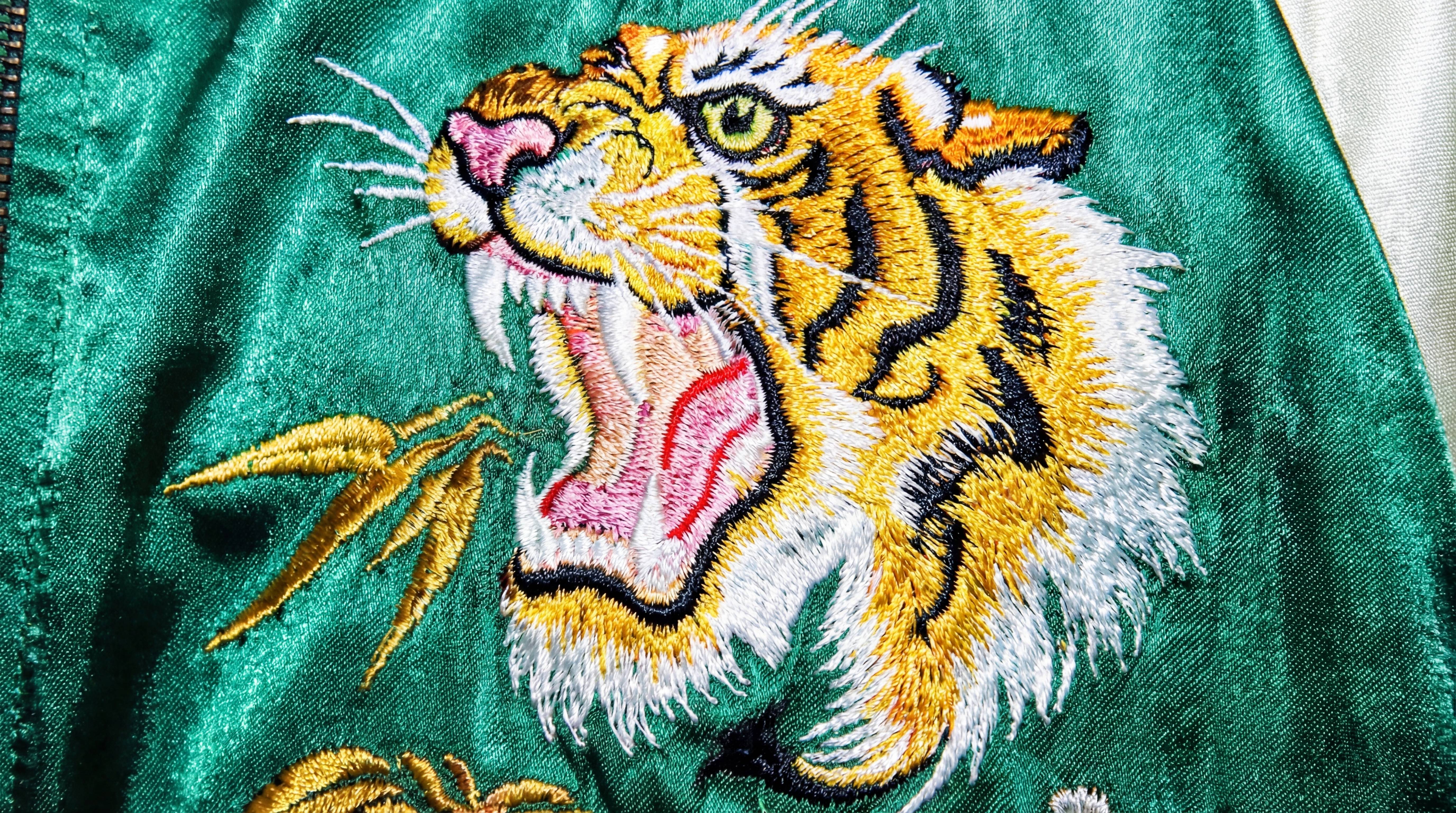
其实 Nano Banana Pro 有能力直接生成九宫格的图片,不过为了保持固定 3:2 的横宽比,六宫格能更好的分离出所有图片,我们这里全部使用 16:9 的大小,以及 4K 画质。
有了这 6 张图片,我们还可以脑洞大开生成更多的关键帧图片,例如原视频中,让库克展示他的金牙、从口袋里掏出一个古早的设备。
例如我们从网上找了一张手镯的图片,让林黛玉展示他的玉手镯,而不是大金表。

▲图 7|输入:图 3+图 5+玉手镯照片,以及提示词:Show me a wide angle close up of the model.The model is holding one wrist vertically in front of her, The opposite hand is gently pulling down the voluminous sleeve of her clothes robe to display a translucent emerald jade bangle. The hand that is pulling down the sleeve has a silver fashion ring shaped like a fallen flower petal on the last two digits of her hand encrusted into the front face.
如果你想保持这种街头的匪帮风格,可以直接使用默认的提示词,找到一个大金表的图片,然后输入下面的内容。
默认提示词:Show me a wide angle close up of the model.The model is holding one wrist vertically in front of him, the opposite hand is pulling down the sleeve of the hoodie to display the watch. The hand that is pulling down the sleeve has a two finger ring on the last two digits of his hand with the letters ‘LOVE’ encrusted into the front face.
此外,鞋子也换上了带有刺绣的潮牌高帮,既有古代绣花鞋的缎面、花朵刺绣,底下又是那种锯齿状的黑色橡胶厚底。

▲图 8|输入图 7 + 图 3 +鞋子照片,提示词:Show me a wide angle worms eye view of the model standing, her right foot is extended in front of her, showing she is wearing the shoes in the reference image. Maintain the setting perfectly, include the finger ring on the models hand, and have her foot angled slightly to the side to highlight the detailing of the shoes
最后是从口袋里,掏出了一盒人参养荣丸,这是一个靠着药物维持生命的赛博朋克少女。
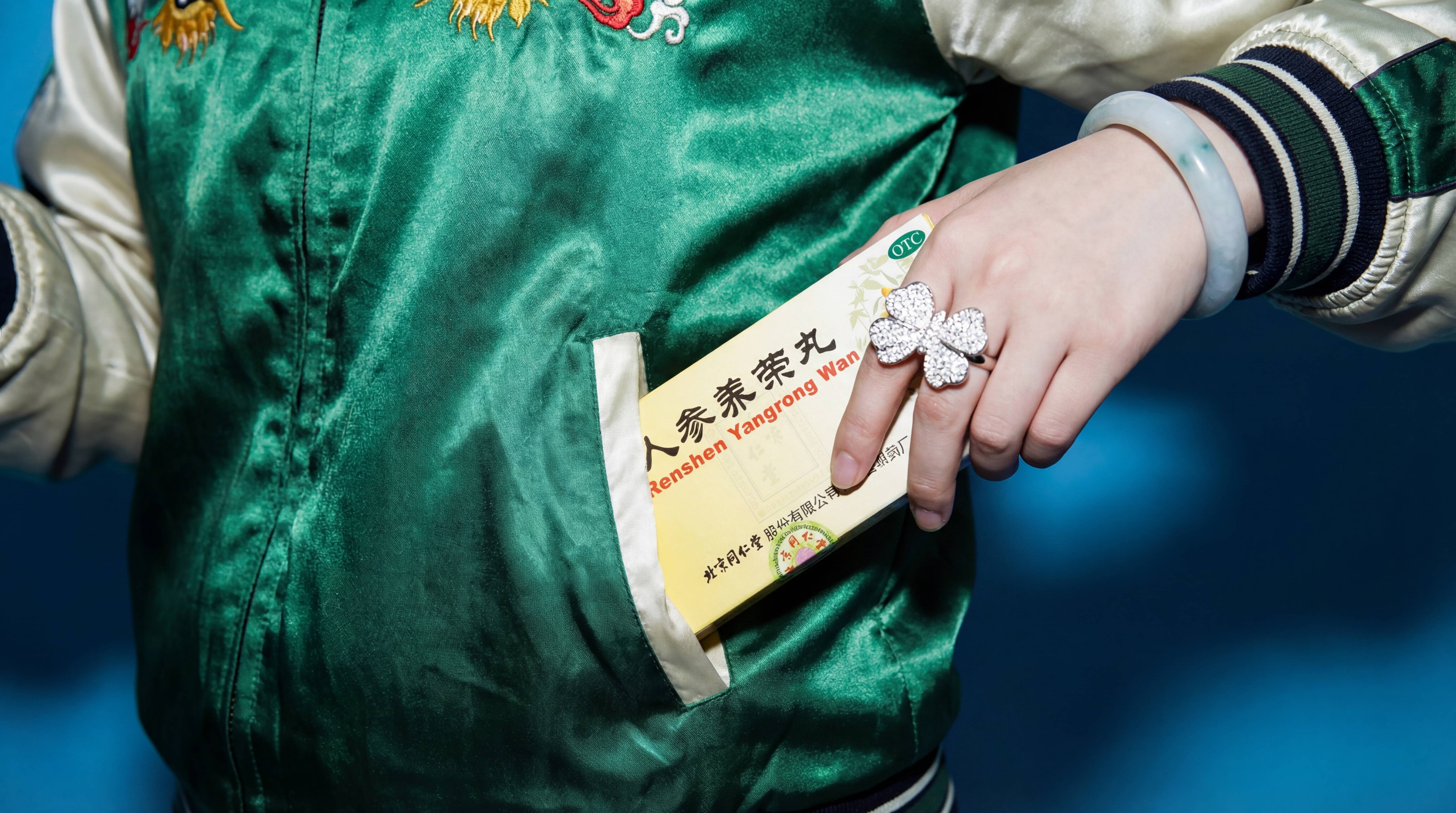
▲图9|输入 图 7+图 8 + 药盒照片,提示词:Tight shot of the model reaching into the side of the kangaroo pouch of the hoodie and partially showing the box of pills.
这里只需要修改 showing the box of pills,把 showing(展示)后面的内容,更换成你希望从口袋里拿出来的物品即可。
得到了全部的关键帧图片,接下来我们就是把这些图片串联起来,制作出一个看起来像是一镜到底的酷炫视频。图片转视频也不是完全不需要提示词,想要得到原视频一样的节奏控制,尽量采用流畅的动作和最小的模特移动,是减少抽卡的重要指令。
博主提到,可以在提示词里面输入,像是「镜头缓慢而平稳地围绕眼镜旋转,同时进行变焦。拍摄对象几乎一动不动,动作极其沉稳而深思熟虑。」
像是图 8 和图 9 之间的转换,我们在提示词里面,就增加了腿慢慢放下,镜头垂直上升的文字。

▲Google Veo 3.1 生成|提示词:Camera Movement (Vertical Scan):
A continuous, seamless vertical crane shot moving upwards. The camera starts low, focused tightly on the embroidered high-top sneakers, then smoothly tilts up and glides along the texture of the grey cargo pants. As the camera rises to waist level, it pushes in (dolly in) towards the green satin jacket.
Subject Action (The Flow):
Start: The subject’s leg (showing the shoe) slowly lowers to a standing position as the camera moves up.
Transition: The subject stands confidently. The hand wearing the butterfly ring moves naturally into the pocket.
End: The hand pulls out a yellow and white medicine box (“Renshen Yangrong Wan”). The focus racks sharply onto the text on the box.
Atmosphere & Consistency:
High-fashion streetwear aesthetic. Hard flash lighting with a blue studio background. Maintain strict consistency of the green sukajan jacket embroidery and the jade bangle. The transition is liquid-smooth, feeling like a single, planned camera move.
你可能会好奇,为什么提示词里面说动作要慢,最后出来的预览视频,给人感觉确实干净利落。其实是用了这位视频博主的另一个工具,不得不佩服现在 AI 视频博主的创意和能力,不仅有好的点子,还能开发好用的工具。
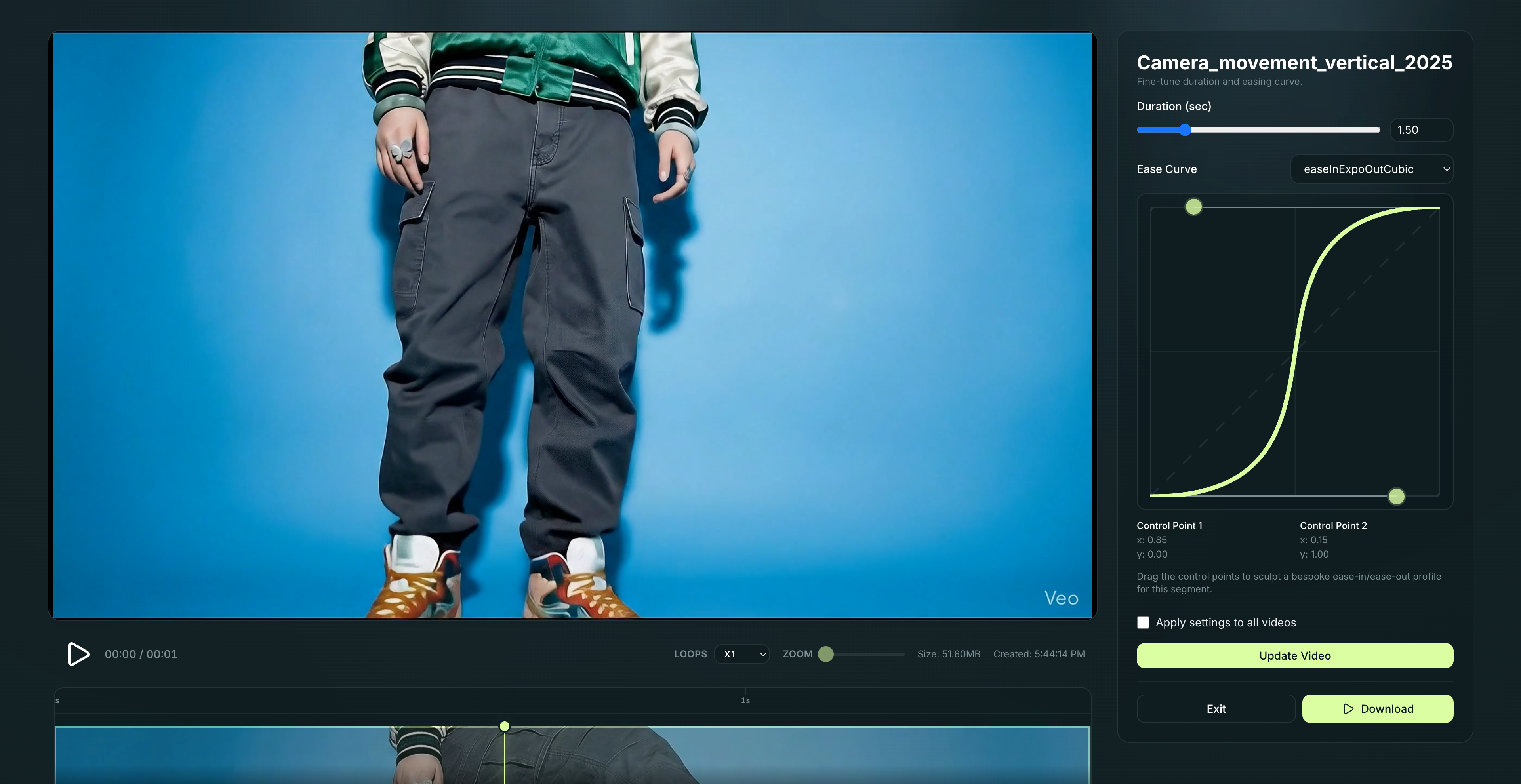
▲地址:https://easypeasyease.vercel.app/,这个工具能对多个视频进行拼接、同时应用缓动曲线和添加音频;目前是免费使用。
通过 EasyPeaseEase 这个工具,我们的视频能够选择压缩到 0.5s-6s 之间,之前通过视频生成模型得到的缓慢动作,经过缓动曲线,让视频从开始到结束,加速或减速过程更平滑、自然,更能模拟真实世界的物理效果,从而让加速后的视频,看起来更生动、有质感,而不是生硬的匀速运动。
最后把这些视频都拼接起来,我们就得到了林妹妹的今日 OOTD 视频展示。
首尾帧转视频的提示词,如果你担心会需要频繁抽卡,直接上传首尾帧图片,问 Gemini 是很有效的方法。
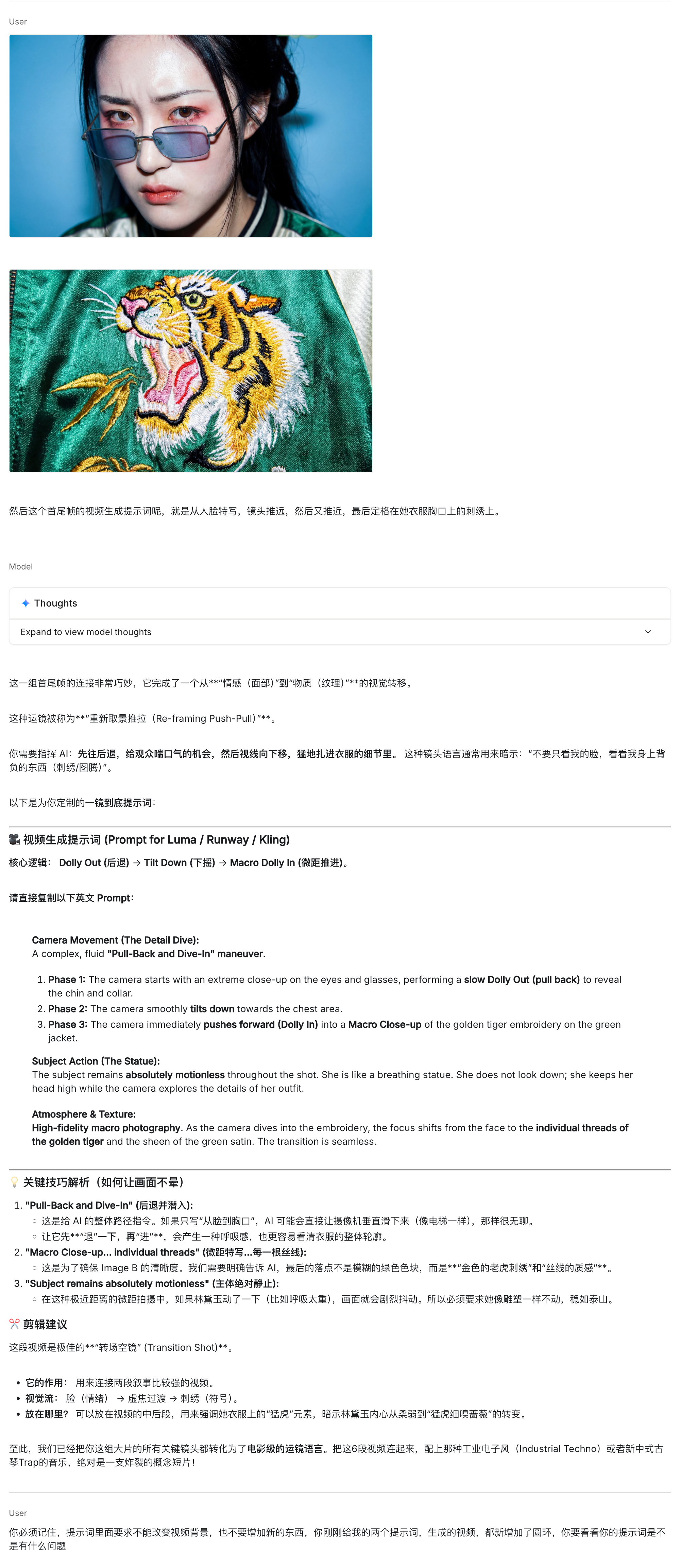
Contact Sheet Prompt,印样表提示词其实是 Nano Banana Pro 非常有意思的一个玩法。先利用 Nano Banana Pro 强大的图片生成和世界知识理解能力,生成一张九宫格的视频关键帧集合,再逐行逐列提取对应的关键帧。
▲视频来源:https://x.com/techhalla/status/1996650389228355819
最后再汇总一波 Nano Banana Pro 的官方使用途径吧。
文中视频可点击该链接前往查看:https://mp.weixin.qq.com/s/s_EIYB0qqcWv29zMM1g-7Q
#欢迎关注爱范儿官方微信公众号:爱范儿(微信号:ifanr),更多精彩内容第一时间为您奉上。
官方数据显示,中国11月自然灾害造成直接经济损失逾4亿元(人民币,下同,7300万新元),农作物受灾面积7300公顷。
据央视新闻报道,中国国家防灾减灾救灾委员会办公室会同有关成员单位,对2025年11月全国自然灾害情况进行了会商分析。
数据显示,中国11月自然灾害以洪涝和地质灾害为主,风雹灾害、低温冷冻和雪灾、沙尘暴灾害、台风灾害、地震灾害、生物灾害等也有不同程度发生。
根据数据,各种自然灾害共造成全国17万2300人次不同程度受灾,一人死亡,紧急转移安置和需紧急生活救助近900人次,倒塌房屋10余户60余间,损坏房屋500余户800余间,农作物受灾面积7300公顷,直接经济损失4.33亿元。
在中国本土市场饱受内卷竞争挤压的中国电动汽车制造商,正将激进的折扣销售策略延伸至泰国,以争取精打细算的消费者。
据彭博社报道,中国电动车企提供十分诱人的优惠。中国电动车巨企比亚迪10月将旗下海豹电动汽车的标价下调了高达38%,并承诺如果今年其他车型再降价将提供补偿。
中国另一车企上汽集团也调降MG4电动两厢车售价27%。奇瑞汽车旗下Jaecoo J5盛大首发,尽管需等待两个月交付,仍凭借促销价锁定了近2万份订单。
在曼谷拥有一家比亚迪销售展厅的泰国商人Thawee Chongkavanit说:““我从来没有这么忙过。”
大幅折扣推动中国车企10月和11月的销量均猛增逾20%,加速泰国消费者从追捧的传统日系品牌转向中国电动汽车品牌的趋势。
不过,上述情况也凸显了泰国汽车行业的压力。制造商正依靠降价清理库存,以寻求完成具挑战性的泰国本土生产目标。
虽然这在短期内提振了销量,但车企却面临长期供应过剩的风险,因为潜在买家预期未来会有更大幅折扣,而可能暂停购车计划。
泰国电动汽车协会高级顾问Krisda Utamote认为,“这种反复降价对市场造成了损害,引发了购车者的恐慌。他们担心如果现在购买,电动汽车价格还会进一步下跌。电动汽车产量超过需求,由于经济环境和金融机构加强汽车贷款管制,供应与市场需求严重脱节。”
与中国不同,泰国当局几乎没采取任何措施遏制激进降价销售策略。在泰国政策框架下,电动车制造商未来几年将面临本地产量义务上升、补贴减少的持续压力,可能导致电动汽车价格长期低迷。
香港法院裁定壹传媒创办人黎智英涉及串谋勾结外国势力等罪名成立,引发英国等国家和组织的不满。中国外交部不点名谴责部分国家公然诋毁抹黑香港司法,并强调不得以任何形式干预香港司法和中国内政。
中国外交部发言人郭嘉昆星期一(12月15日)在例行记者会上就黎智英案说,香港是法治社会,中央政府坚定支持特区依法维护国家安全,惩治危害国家安全的犯罪行为。
他指出,中国对个别国家公然诋毁抹黑香港司法表示强烈不满和坚决反对;香港特区司法机关依法履职尽责,维护法律权威,捍卫国家安全,合情合理合法,不容置喙。
郭嘉昆说,黎智英案件纯属香港特区内部事务,并敦促有关国家尊重中国主权,尊重香港法治,不得就特区司法案件审理发表不负责任的言论,不得以任何形式干预香港司法、干涉中国内政。
香港法院星期一裁决黎智英涉及串谋勾结外国势力和串谋发布煽动刊物的三项罪名成立。法庭把求情定在明年1月12日,需要四天的时间,并会尽早就判刑订下日期。根据《香港国安法》,勾结外国势力罪的最高刑期为终身监禁。
英国外交部随后发表声明,谴责对黎智英的裁决,并呼吁立即释放他。
此外,中国国务院港澳事务办公室同日在微信公众号发表署名“港澳平”、题为《坚决支持香港特区对反中乱港首恶分子黎智英依法定罪》的文章。
文章称,黎智英长期以来“逢中必反”,投靠外国和境外势力,对香港、对国家干尽各种坏事,严重冲击“一国两制”原则底线,严重危害国家安全,严重破坏香港繁荣稳定,严重损害市民利益福祉。
文章指出,今天的香港,维护国家安全法律制度和执行机制愈加健全。外部势力和反中乱港分子肆无忌惮、为所欲为的日子已经一去不复返。任何人、任何组织胆敢挑战维护国家安全法律、实施危害国家安全行为和活动,无论其打着什么幌子,无论其有什么“后台”“主子”,都必定受到法律的严厉惩治。
文章最后说,“我们坚定支持香港特区全面准确实施香港国安法,任何妄想阻挠香港特区维护国家安全的图谋都是徒劳无功的”,并称外部势力施压干预香港特区审理国安案件,甚至威胁制裁特区政府官员和司法人员的卑劣行径,动摇不了香港特区坚定维护法治、维护国家安全的决心意志,“只能更加激起香港社会的同仇敌忾,只能更快敲响其在港代理人的丧钟”。
When Becky ordered a Barbie doll for her daughter, she got a notification from delivery firm Evri saying it had arrived. There was just one problem: it was nowhere to be seen.
There was no parcel at her front door, in the Hampshire village of Twyford, and the photo she was sent of its location was not one she recognised.
Becky turned detective - and she discovered that reports of similar incidents nearby had "snowballed".
Around the corner, her neighbour Jonathan had received a similar notification. It showed a photo of a parcel of tools he was expecting - taken inside a car - but nothing had been delivered. He tried to take it up with Evri, but told BBC Panorama that "they don't respond - it's very frustrating".


With millions relying on delivery companies to send their parcels this Christmas, we have been investigating Evri, including sending a journalist undercover as a courier.
The company is a market leader, but a recent customer survey of the 11 biggest delivery firms by industry regulator, Ofcom, suggested Evri had the most issues for parcels not being delivered and the highest level of customer dissatisfaction.
Amazon and FedEx came top for customer satisfaction.
While Evri disputes Ofcom's findings, 30 current and former workers have told us problems are being caused by growing pressures on couriers."They have to deliver so much volume now for a decent pay," one told us.
The link between poor service and work pressures was further borne out by Panorama's investigation, which found:
In Hampshire, parcels started to go missing in Twyford six months after a regular courier, Dave, left Evri. He worked as an Evri courier for six years, often with his wife, and they earned about £60,000 a year between them.
Like all Evri couriers, Dave was self-employed. But, because Evri pays couriers by the parcel, and sets the rate per parcel, it felt like the company was in the driving seat.
Changes to Evri's parcel rates last January, meant it no longer made financial sense to carry on, Dave told us. It would have led to him being paid less than the minimum wage, he says.
The amount Evri couriers are paid depends on the size and weight of the parcels they deliver and how far they must travel.
Couriers like Dave, who was on an Evri Plus contract, are supposed to be guaranteed at least the National Minimum Wage - currently £12.21 per hour for those aged 21 and over.
Dave says he estimated that with Evri's changes, including a new "small packets" rate, he would earn £10 an hour.
"You were always looking over your shoulder, wondering what might come next in terms of reducing your rates," he told us. "So that you're paid less for what you're doing even though you're doing the same job."
Another Evri Plus courier told Panorama he could earn as little as £7 or £8 an hour at times, once fuel and his vehicle's running costs had been taken into account.


This shouldn't be happening - according to what Evri's legal director, Hugo Martin, told a parliamentary select committee in January. The company's paid-per-parcel model, he told MPs, made sure that "couriers earn well above national minimum wage".
The committee chair, Labour's Liam Byrne, has now told Panorama that because of the "categorical assurances" that people were not paid below the minimum wage, the company should now be recalled to Parliament to investigate the full picture.
His comments come as a separate, cross-party group of MPs expressed their own concerns about Evri's delivery record last week.


We put Mr Byrne's comments to Evri and a spokesperson said company couriers "generate earnings significantly above the National Living Wage".
The National Living Wage and the National Minimum Wage are currently the same for anyone aged over 21 - £12.21 an hour.
Average courier earnings, the Evri spokesperson continued, "exceeded £20 an hour". The "sector is highly competitive, but we benchmark pay locally", they added.
It wasn't just Dave who told us the introduction of Evri's "small packets" has made it harder to make a living.
Other couriers told us they had started to see more of them in their rounds, and that it was eating into their earnings because they received less money to deliver them.
Rates vary, but Evri pays couriers as little as 35p to deliver one.
The company told us it had introduced the new "small packets" sizing in January to "remain competitive".
However, big parcels, for which couriers would be paid more per delivery, keep getting mislabelled as small packets, some couriers told the BBC.

 Getty Images
Getty ImagesEvri does not do enough to check the items are being accurately weighed and measured by senders, they said - with heavy flatpack furniture and radiators listed as examples of large items which had been "misbanded" and paid for as small packets.
One courier told us he delivered "countless numbers of misbands", leaving him short-changed.
Parcels are labelled by clients, not Evri, the company told the BBC. It said that 99.2% of all parcels were correctly banded - and that "couriers can request checks and upgrades via the courier app, if they think a parcel has been misbanded".
An Evri courier of 10 years told us their colleagues were "cutting corners" because they had to deliver so much in terms of volume to get a decent wage.
"They are not doing the job correctly… parcels go missing," he added. "Piles of parcels are found in hedges."
Our undercover reporter, who we are calling Sam because he wants to remain anonymous, was told by another courier, "if you want to earn money, you need to find a safe place and leave it there".
"You can even throw the parcel at the back door, you only get paid if the parcel is delivered," the courier explained during Sam's six-day stint in October at Evri's West Hallam delivery unit near Nottingham.
As a new starter, Sam was put on a Flex contract, which does not include sick or holiday pay and does not commit to paying the minimum wage, unlike the Plus contract.
It can be difficult for new starters to earn the same as more experienced couriers, as they don't know their patch, so they won't be as efficient.
Sam was told he could be eligible for some extra cash. New starters get payments to ensure they earn adequately while they get used to the work, Evri's lawyers told the BBC.
Couriers told us they are not paid extra for the time it takes to scan the parcels and load them into their vehicles at depots - but Evri says it factors this time into its parcel rates.

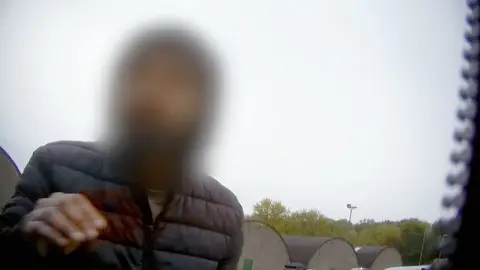
Couriers are also only paid if a package is delivered and a photograph is taken - which is supposed to mean giving it to the customer, a neighbour, or finding a safe place, and not leaving it in plain sight outside the delivery address.
If drivers cannot deliver a parcel, they should make at least two more attempts to do so - according to Evri rules - but this takes time.
Back at the depot, a courier told Sam there was not much point trying to redeliver because couriers did not get paid for going back.
"You'll make no money, my friend, unless you get all your parcels out. Get them all out," he said. "There's a safe space for everything, mate."

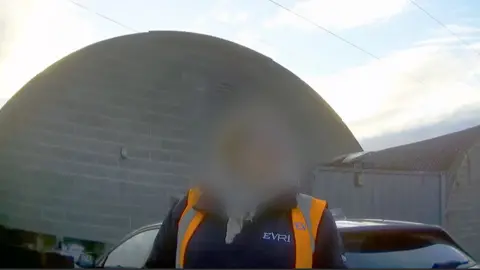
The company says it will deliver about 900 million parcels this year, going to almost every single home in the UK.
But 7% of customers in the six months between January and July said they had reported an Evri parcel not having been delivered - compared to an industry average of 4% - according to Ofcom's recent consumer survey.
The survey also suggested Evri had the most issues for delays in the UK, with 14% of customers reporting a parcel arriving late in the same period. The industry average is 8%, says Ofcom.
Evri told us it provides "a fast, reliable, and cost-effective delivery service" and that its "couriers are local people… and the vast majority do an excellent job and strictly follow our delivery standards".
If "a courier receives a low customer rating for a delivery, this is immediately investigated", it says.
The company, which rebranded from Hermes UK in 2022, has been owned since last year by the American investment firm Apollo Global Management. In the financial year 2023-24, Evri's pre-tax profit almost doubled to nearly £120m.
"I think Evri are making a fortune off the couriers' backs and I think the couriers are being totally ripped off," one courier told us.
For Becky and Jonathan in Hampshire, at least, all was not lost.
Becky started a spreadsheet for other people in the area to list their missing Evri parcels, after seeing how many comments were being left on the village Facebook group.
Almost 90 incidents were reported to the police. A man was arrested but never charged.
Lawyers for Evri told the BBC that this was an isolated incident and that the company took prompt action.
"The performance of our couriers is tracked in real time, with mandatory photo proof for every delivery," the company said.
Becky got a refund from the seller and bought a new Barbie, and Jonathan got his tools replaced by the seller.

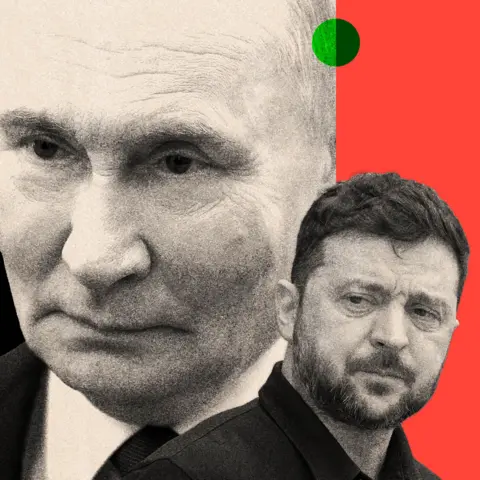 BBC
BBCVladimir Putin may have a reputation among some as a ruthless autocrat, a master manipulator of the international scene. But one thing Russia's president does not have is a poker face.
The late US Senator John McCain used to joke that when he looked into Putin's eyes, he saw three things, "a K and a G and a B", a reference to his past life as a Soviet intelligence officer.
I thought of this as I watched footage of Russia's leader sitting opposite American envoys in the Kremlin. He could not hide his emotions; he exuded an air of supreme confidence.
For President Putin reckons the diplomatic tide has turned in his favour, with an improved relationship with America and gains on the battlefield.
Some analysts say Putin has no incentive to retreat from his demands: that Ukraine gives up the last 20% of Donetsk it still controls; that all occupied territory is recognised internationally as Russian; that Ukraine's army is curtailed to a point of impotence; and Nato membership is ruled out forever.
As things stand, there are a few possible scenarios. The first is that US President Donald Trump may try to force Ukraine into a ceasefire on terms unwelcome to its people, one that cedes territory and lacks sufficient security guarantees to deter future Russian aggression.
If Ukraine demurs or Russia vetoes, President Trump has hinted he could wash his hands of the war; last week, he said "sometimes you have to let people fight it out".

 AFP via Getty Images
AFP via Getty ImagesHe could remove the vital US intelligence Ukraine needs to detect incoming Russian drones and target Russian energy facilities.
Another possibility is that the war could just stumble on with Russia's forces continuing to make slow advances in the east.
The Trump administration's new national security strategy implied that Russia is no longer an "existential threat" to the US, and urged the US to "re-establish strategic stability" with Russia.
So, with American support for Ukraine in serious question, what - if anything - could potentially change Putin's mind? And what else could Ukraine, Europe and even China, do differently?
At the moment, the continent is preparing for a ceasefire. Under the banner of the "coalition of the willing", it is preparing an international military force to help Ukraine deter future Russian invasion, alongside a financial effort to help reconstruct the war-ravaged country.
But some officials suggest that Europe should instead prepare for the war to muddle on.
They want to help Ukraine not only "win the fight tonight", with more drones and cash; but also provide longer term support and prepare for a 15 to 20 year war with Russia.

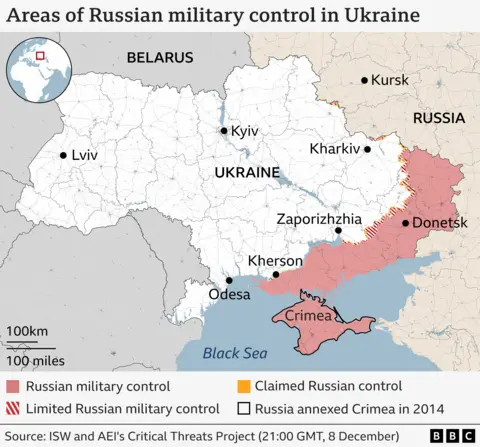
Europe could also do more to help protect Ukrainian skies from drones and missiles. There is already a plan – called the European Sky Shield Initiative – which could be expanded to allow European air defences to protect western Ukraine.
Others argue European troops could be deployed to western Ukraine to help patrol borders, freeing up Ukrainian soldiers to fight on the front line. Most proposals such as this have been rejected for fear of provoking Russia or escalating the conflict.
Keir Giles, senior consulting fellow at the Russia and Eurasia programme at Chatham House think tank, said these fears were based on "nonsense" because Western troops were already present on the ground and Sky Shield could be deployed in western Ukraine with little chance of any clash with Russian aircraft.
European leaders, in his view, had to "insert themselves into the conflict in a manner that will actually make a difference".

 WPA Pool/Getty Images
WPA Pool/Getty ImagesMr Giles said: "The only thing that will unarguably, undeniably stop Russian aggression is the presence of sufficiently strong western forces where Russia wants to attack, and the demonstrated will and resolve that they will be used to defend."
This strategy would of course come with huge political difficulty - with some voters in western Europe unwilling to risk a confrontation with Russia.
Few analysts expect Ukraine to reverse the tide and make actual territorial gains of its own.
Having spent several weeks in Ukraine recently, I heard no mention of any Spring offensive, only the need to slow Russia's advance and increase the price it pays in blood and treasure.
Some western diplomats claim Russia's generals are lying to the Russian president, pretending the situation on the ground is better than it is - adding to what they see as a deliberate strategy to exaggerate Russian gains, designed to suggest Ukraine is on the back foot and should thus sue for peace.
According to Thomas Graham in Foreign Affairs, in this year, Russia has seized only 1% of Ukrainian territory at a cost of more than 200,000 dead and wounded.

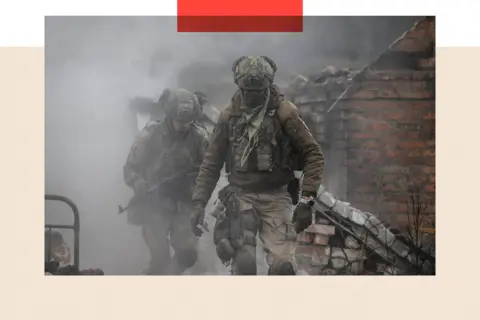 AFP via Getty Images
AFP via Getty ImagesFiona Hill, senior fellow at the Center on the United States and Europe at the Brookings Institution, who served on Trump's national security council during his first term, says the biggest thing Putin has in his favour is that many people believe Ukraine is losing.
"Everyone is talking of Ukraine as the loser when it now has the most potent military in Europe," she says.
"Just think what they have done to Russia. It is remarkable they have held off for so long not least fighting with one hand behind their back."
Then there's the lever of sanctions. Certainly, Russia's economy is suffering. Inflation at 8%, interest rates 16%, growth slowed, budget deficits soaring, real incomes plunging, consumer taxes rising.
A report for the Peace and Conflict Resolution Evidence Platform says Russia's war economy is running out of time. "The Russian economy is substantially less able to finance the war than it was at the beginning of it in 2022," the authors say.
But so far none of this appears to have changed much Kremlin thinking, not least because businesses have found ways of evading restrictions, such as transporting oil on unregistered ghost ships.

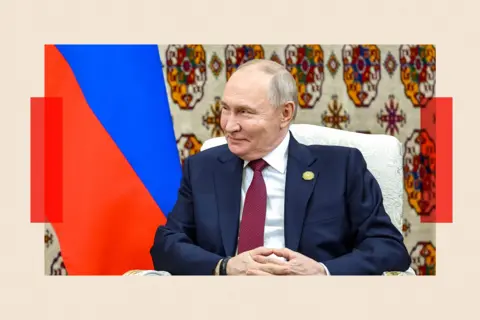 Sputnik/Alexander Kazakov/Pool via Reuters
Sputnik/Alexander Kazakov/Pool via ReutersTom Keatinge, director of the Centre for Finance and Security at Rusi, said western messaging about sanctions was convoluted and there were too many loopholes.
Russia would, he said, work around recent US sanctions on two Russian oil giants, Lukoil and Rosneft, just by re-labelling the exported oil as coming from non-sanctioned companies.
Mr Keatinge said if the West really wanted to hurt Russia's war economy, it would embargo all Russian oil and fully implement secondary sanctions on countries that still buy it. "We need to stop being cute and go full embargo," he said.
"We need to take our implementation of sanctions as seriously as the Kremlin takes circumvention."
In theory, sanctions could also affect Russian public opinion. In October, a survey by the state-run Public Opinion Research Centre (VCIOM) said 56% of respondents said they felt "very tired" of the conflict, up from 47% last year.
But the consensus among Kremlinologists is that much of the Russian public remains supportive of Putin's strategy.

 Reuters
ReutersThe European Union could agree to use about €200bn (£176bn) of frozen Russian assets to generate a so-called "reparation loan" for Ukraine. The latest European Commission proposal is to raise €90bn (£79bn) over two years.
In Kyiv, officials are already banking on getting the cash. But still the EU hesitates.
Belgium, where the bulk of the Russian assets are held, has long feared being sued by Russia - and on Friday, the Russian Central Bank announced legal action against Belgian bank Euroclear in a Moscow court.
Belgium says it will not agree the loan unless legal and financial risks are shared more explicitly with other EU members. France has concerns, such is its own vast debts, and fears exploiting the frozen assets could undermine the stability of the eurozone.
EU leaders will make a further attempt to agree a deal when they meet in Brussels on 18 December for their final summit before Christmas. But diplomats say there is no guarantee of success.
There is also disagreement over what the cash should be used for: keeping Ukraine's state solvent now or paying for its reconstruction after the war.
As for Ukraine, it could mobilise more of its armed forces.
It remains the second-biggest army in Europe (behind Russia), and the most technically advanced - but it is nonetheless struggling to defend an 800-mile frontline.
After almost four years of war, many soldiers are exhausted and desertion rates are rising.

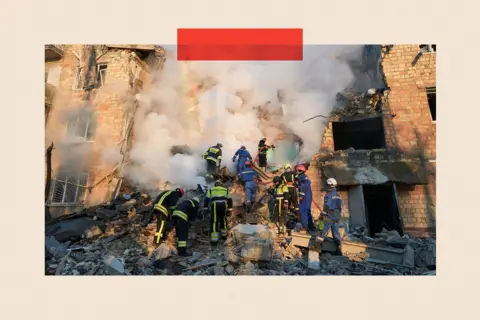 Getty Images
Getty ImagesArmy recruiters are finding it harder to fill gaps as some younger men hide from press gangs or flee the country. But Ukraine could widen its conscription laws.
Currently only men aged 25 to 60 must be available to fight. This is a deliberate strategy by Kyiv to manage Ukraine's demographic challenges; a country with a low birth rate and millions living abroad cannot afford to lose what have been dubbed "the fathers of the future".
This puzzles outsiders. "I find it incredible that Ukraine has not mobilised its young people," one senior UK military figure told me.
"I think Ukraine must be one of the only countries in history facing an existential threat that has not thrown its mad 20-year-olds into the fight."
Fiona Hill said Ukraine had simply learned the lesson of history and the devastating impact World War One had on 20th Century European empires, which declined after failing to rediscover the population growth that had fuelled their economic rise.
"Ukraine is just thinking of their demographic [future]."
If Ukraine could import and manufacture more long-range missiles, it could hit Russia harder and deeper.
This year it stepped up its air strikes on targets both in occupied territory and the Russian Federation. Earlier this month Ukraine's military commanders told Radio Liberty they had hit more than 50 fuel and military-industrial infrastructure facilities in Russia during the autumn.
Alexander Gabuev, director of the Carnegie Russia Eurasia Center, says some Russians experienced fuel shortages earlier this year. "By late October, Ukrainian drones had hit more than half of Russia's thirty-eight major refineries at least once.
"Production outages spread across multiple regions, and some Russian gas stations began rationing fuel."
But would more deep strikes on Russia make an impact, when both the Kremlin and public opinion in Russia seem indifferent?

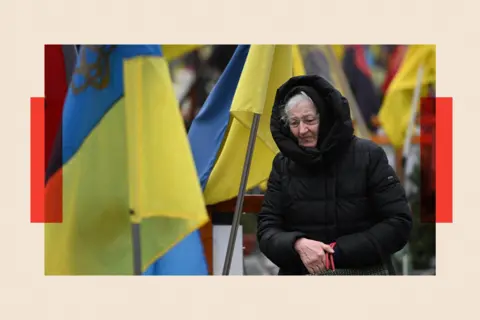 AFP via Getty Images
AFP via Getty ImagesMick Ryan, former Australian major general and now fellow of the Center for Strategic and International Studies, says deep strikes are not a magic bullet.
"They are an extraordinarily important military endeavour, but insufficient by themselves to force Putin to the negotiating table or to win the war."
Dr Sidharth Kaushal, senior research fellow in military sciences at the Royal United Services Institute (Rusi) think tank, said more deep strikes would certainly damage Russia's energy and military infrastructure, as well as using up its air defence missiles. But he warned the tactic could be counterproductive.
"It could reinforce the argument the Russian leadership makes that an independent Ukraine poses a massive military threat," he said.
There's also - still - a diplomatic route.
Some analysts argue that if Putin is offered a way out of the war, he may choose it.
The theory goes like this: a deal is agreed that allows both sides to claim victory. Say, a ceasefire along the line of contact; some areas demilitarised; no formal territorial recognition. Compromises all round.
But the deal would require the US to engage hard with Russia, setting up negotiating teams, using its power to drive through agreement.
"The United States… needs to deploy its formidable psychological leverage it possesses over Russia,"
Thomas Graham argues. "One cannot overstate the role the United States – and Trump personally – plays in validating Russia as a great power and Putin as a global leader."
The wild card is China. President Xi Jinping is one of the few world leaders Putin listens to. When Xi warned earlier in the conflict against Russian threats of nuclear weapon use, the Kremlin fell swiftly in line.
Russia's war machine is also huge dependent on China's supply of dual use goods – such as electronics or machinery that can be used for civilian and military purposes.
So if Beijing decided it was no longer in China's interests for the war to continue, then it would have substantial leverage over Kremlin thinking.
For now, the US shows no sign of trying to encourage – or force – China to put pressure on Moscow. So the question is whether President Xi would be willing to apply any leverage off his own bat.

 Shutterstock
ShutterstockAt the moment China seems happy for the US to be distracted, for transatlantic allies to be divided, and for the rest of the world to view China as a source of stability. But if Russia's invasion escalated, if global markets were disrupted, if the US applied secondary sanctions on China in punishment for its consumption of cheap Russian energy, then the thinking in Beijing might change.
For now though, Putin believes he is sitting pretty, with time on his side. The longer this conflict goes on, analysts say, the more Ukrainian morale will fall, the more divided its allies will become, and the more territory Russia will gain in Donetsk.
"Either we liberate these territories by force of arms or Ukrainian troops leave these territories," Putin said last week.
"Nothing will change his position," Fiona Hill told me. "Unless he exits stage left. Putin is betting right now that he can keep this going for long enough that circumstances play out to his advantage."
Top picture credit: Reuters


BBC InDepth is the home on the website and app for the best analysis, with fresh perspectives that challenge assumptions and deep reporting on the biggest issues of the day. You can now sign up for notifications that will alert you whenever an InDepth story is published - click here to find out how.

 Getty Images
Getty ImagesAt first glance, my emails are polite and warm, after all "I'm just checking" in on a deadline but "no worries either way".
However, a closer look reveals my messages are punctuated by unnecessary apologies, smiley faces, exclamation marks and even kisses.
I like to think I'm being friendly and approachable, but according to experts, these linguistic habits may be quietly undermining how seriously I'm taken at work.
Careers coach Hannah Salton and etiquette coach William Hanson explain why so many of us write like this and the impact it could be having on how we're perceived, and even promoted at work.
"Thanks very much!" I've replied to many an email - my punctuation may be extra but a full stop feels blunt.
People use exclamation marks to show "positivity and enthusiasm," says Hannah.
Women use them three times more often than men, a recent study published in the Journal of Experimental Social Psychology found.
She thinks that’s likely down to the idea that "women are often judged more harshly than men when they are direct and are called bossy and other gendered negative words".
And while a single exclamation mark isn't the problem the cumulative effect can be, warns Hannah.
“If it looks fake or like it's covering up insecurity it could impact credibility,” she explains.
Written communication is notoriously easy to misread, which is why many of us insert an emoji as a picture of our warmth or humour.
But etiquette coach William Hanson warns this can backfire.
"One emoji can mean different things to different people or something entirely unintended," he says.
"It would be better if people used words and a good command of English," he advises.
Emojis can have an "infantile connotation" which could lead to people perceiving you as younger, less senior, capable or responsible, he says.
"I would not put an emoji in an email," he says. "You can be friendly in your writing and remain professional at the same time."
And when it comes to signing off with a kiss, he says: "I would never put a kiss on the end of an email unless I would kiss them on the cheek in real life."
"Just checking that you're following me and this all makes sense?"
Emails containing reassurance checkers can be self-depreciating," Hannah says, adding that over time, that tone can subtly shape how someone is perceived.
"As a manager, it's a difficult balance of being liked and respected and if you're not direct, there's a risk of creating an impression of being less capable," she says.
"There are definitely times where communicating in an overly apologetic or overly measured way can make you come across as less impactful."
"A lot of it is unconscious," Hannah says. "No one reads an email and thinks 'oh, they don't back themselves', it's more subtle than that.
"But if you're consistently communicating in a people-pleasing way, that can build up an impression of someone who doesn't back themselves, or who is potentially less competent."
Here are some of the things you might want to consider losing to appear more professional, our experts suggest:
Hannah and William stress it's not about stripping all warmth or personality from professional communication.
"Personal style is important," Hannah says. "Showcasing personality at work is not a bad thing. You don't want to feel like you have to filter everything you write and remove any personality from it."
But at the same time you shouldn't use certain words and symbols "as a tool to be liked".
A practical way to spot and reduce these habits without losing personality is to pay attention to the emails you receive and notice how different styles make you feel - what sounds clear, confident or reassuring, and what feels excessive, she says.
Salton says AI tools can also be useful for reviewing drafts and removing excess filler or qualifier words.

 Getty Images
Getty ImagesSir Cliff Richard has revealed he has been treated for prostate cancer.
The 85-year-old singer said the cancer was discovered when he had a check-up for a recent tour, but that it had been caught early and had not spread.
"I was going to Australia and to New Zealand and the promoter said, 'Well we need your insurance, so you need to be checked up for something'. They found that I had... prostate cancer," he told ITV's Good Morning Britain.
"The good fortune was that it was not very old, and the other thing is that it had not metastasized. It hadn't moved, nothing into bones or anything like that."
Sir Cliff was speaking to journalist Dermot Murnaghan, who revealed in June that he has stage four prostate cancer.
The singer said: "I don't know whether it's going to come back. We can't tell those sort of things but we need to, absolutely, I'm convinced, get there, get tested, get checked."
Sir Cliff also said he wants to work with the King to improve cancer screening for men, after the King spoke last week about his own cancer treatment and emphasised the importance of checks to catch cancer at an early stage.
The musician described the lack of a national screening programme as "absolutely ridiculous".
"We have governments to look after our country and those who live in that country, so I can't see how you can say, 'Oh we can do this, we can do that, but we don't do this for these people'," he said.
"We all deserve to have the same ability to have a test and then start treatments really early.
"It seems to me - I've only been for one year now in touch with cancer, but every time I've talked with anybody, this has come up and so I think our government must listen to us."
Sir Cliff is known for decades of hits including The Young Ones, We Don't Talk Anymore and Summer Holiday.
Last month, the National Screening Committee – which advises governments across the UK – said a screening programme for prostate cancer for all men in the UK is not justified.
They say only men with specific genetic mutations that lead to more aggressive tumours should be eligible.
A three-month consultation began at the end of November before the committee meets again and gives its final advice to ministers in England, Wales, Northern Ireland and Scotland, who will each have to make their own decision on prostate screening.

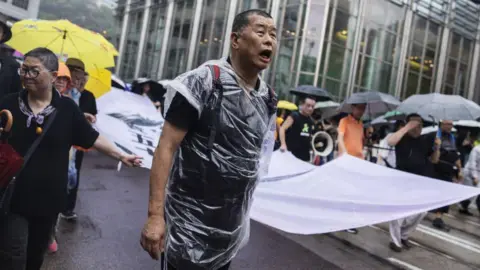 Getty Images
Getty ImagesHong Kong pro-democracy campaigner and media tycoon Jimmy Lai has been found guilty of colluding with foreign forces under the the city's controversial national security law (NSL).
The 78-year-old, who has been in jail since December 2020, pleaded not guilty. He faces life in prison and is expected to be sentenced early next year.
Lai used his now-defunct Apple Daily newspaper as part of a wider effort to lobby foreign governments to impose sanctions on Hong Kong and China, the court found.
Hong Kong's chief executive John Lee welcomed the verdict, noting that Lai's actions "damaged the country's interests and the welfare of Hong Kongers", but rights groups called it "a cruel judicial farce".
They say the NSL, which Beijing defends as essential for the city's stability, has been used to crush dissent.
There is "no doubt" that Jimmy Lai "harboured hatred" for the People's Republic of China (PRC), Judge Esther Toh said on Monday, citing his "constant invitation to the US to help bring down the government of the PRC with the excuse of helping the people of Hong Kong".
When Lai testified in November, he denied all the charges against him, saying he had "never" used his foreign contacts to influence foreign policy on Hong Kong.
Asked about his meeting with then US Vice President Mike Pence, Lai said he did not ask anything of him: "I would just relay to him what happened in Hong Kong when he asked me."
He was also asked about his meeting with then secretary of state Mike Pompeo, to which he said he had asked Pompeo, "not to do something but to say something, to voice support for Hong Kong".
Lai, a UK citizen and one of the fiercest critics of the Chinese state, was a key figure in the pro-democracy protests that engulfed Hong Kong in 2019. Beijing responded to the months-long demonstrations, which sometimes erupted into violent clashes with police, by introducing the NSL.
The law was enacted without consulting the Hong Kong legislature and gave authorities broad powers to charge and jail people they deemed a threat to the city's law and order, or the government's stability.
Lai was accused of violating the NSL for his role in the protests and also through his tabloid Apple Daily, which became a standard bearer for the pro-democracy movement.
Monday's ruling also found Lai guilty of publishing seditious material on Apple Daily under a separate colonial-era law.
Lai appeared calm as the verdict was read out and waved goodbye to his family as he was escorted out of the courtroom. Lai's wife Teresa and one of his sons were in court, along with Cardinal Joseph Zen, a long-time friend who baptised Lai in 1997.

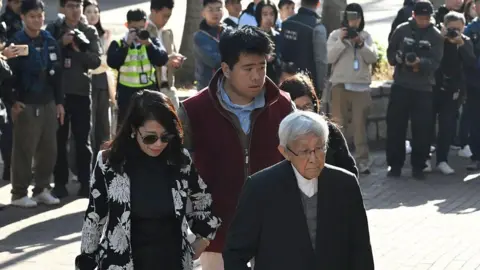 Getty Images
Getty Images"Mr Lai's spirit is okay," his lawyer Robert Pang said after the verdict. "The judgement is so long that we'll need some time to study it first. I don't have anything to add at the moment." He did not say whether they would appeal.
"The Chinese government abused Jimmy Lai with the aim of silencing all those who dare to criticise the CCP [Chinese Communist Party]," said Elaine Pearson, Asia Director at Human Rights Watch, following the verdict.
"In the face of the farce of Jimmy Lai's case, governments should pressure the authorities to withdraw the case and release him immediately."
Western governments, including the UK and US, have for years called for Lai's release, which Beijing and Hong Kong have rejected.
US President Donald Trump had earlier vowed to "do everything to save" Lai while UK PM Keir Starmer had said securing his release was a "priority".
Lai's trial came to be widely seen as yet another test of judicial independence for Hong Kong's courts, which have been accused of toeing Beijing's line since 2019, when it tightened its control over the city.
Hong Kong authorities insist the rule of law is intact but critics point to the hundreds of protesters and activists who have been jailed under the NSL - and its nearly 100% conviction rate as of May this year.
Bail is also often denied in NSL cases and that was the case with Lai too, despite rights groups and Lai's children raising concerns about his deteriorating health. He has reportedly been held in solitary confinement.
Lai's son Sebastien told the BBC earlier this year that his father's "body is breaking down" - "Given his age, given his health... he will die in prison."
The Hong Kong government has also been criticised for barring foreign lawyers from working on NSL cases without prior permission. They said it was a national security risk, although foreign lawyers had operated in the city's courts for decades. Subsequently Lai was denied his choice of lawyer, who was based in the UK.
Lai now joins dozens of figures of the city's pro-democracy movement who have been sentenced to prison under the NSL.
The chief of Hong Kong's national security police addressed the media after the verdict, saying Lai had "fabricated news" in pursuit of "political goals".
On the mainland, state-run Global Times quoted a Hong Kong election committee member as saying that the case sends a "clear message": "Any attempt to split the country or undermine Hong Kong's prosperity and stability will be met with severe punishment under the law."
Lai, who was born in mainland China, fled to Hong Kong when he was 12 years old and got his footing as a businessman after founding the international clothing brand Giordano.
His journey as a democracy activist began after China brutally crushed pro-democracy protests in Beijing's Tiananmen Square in 1989.
Lai started writing columns criticising the massacre and went on to launch a string of popular pro-democracy publications, including Apple Daily and Next.
Even now, many Hong Kongers see him as a leading voice for democracy - about 80 people had queued to enter the court ahead of the verdict on Monday.
One of them was Ms Lam who didn't want to share her full name. An apple in hand, she said she started queuing around 11:00 local time on Sunday – nearly a full day before the session – because dozens of people had come before her. It was a cold night, she said, but she did it because she had wanted to wish Lai good luck.
"We all feel frustrated and powerless. Yet, there must be an ending to the whole issue and time comes when it comes," a former Apple daily journalist, who was also in court, told the BBC.
"Jimmy always said that he was indebted to Hong Kong... but I think Hong Kong and most Hong Kongers are so grateful to have him upholding the core values, good faith and integrity for the community at the expense of his well being and personal freedom."
In his testimony, Lai had said that he had "never allowed" his newspaper's staff to advocate for Hong Kong independence, which he described as a "conspiracy" and "too crazy to think about".
"The core values of Apple Daily are actually the core values of the people of Hong Kong," he had said. These values, he added, include the "rule of law, freedom, pursuit of democracy, freedom of speech, freedom of religion, freedom of assembly".
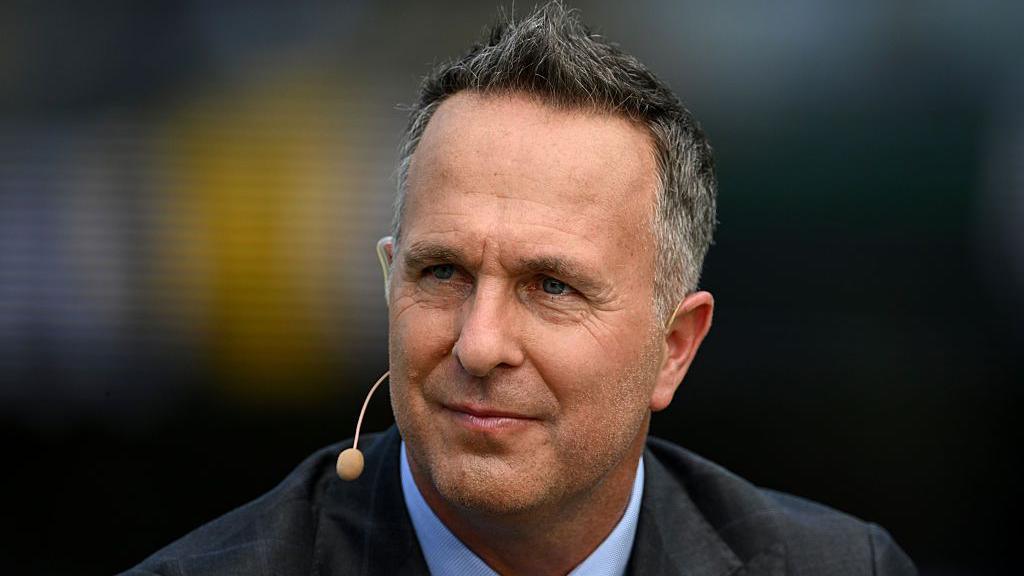
Vaughan described the response of authorities, restaurant staff, and bystanders as "incredible"
Former England captain Michael Vaughan has described hearing gunshots during Sunday's terror attack at Bondi Beach as "terrifying".
Vaughan, who is in Australia commentating on the Ashes, was locked inside a restaurant "a few hundred yards from Bondi" for several hours alongside his wife, sister-in-law, two daughters, and a friend.
The 51-year-old, who is staying in nearby Coogee and had spent the day with his family watching his son's cricket match, was on his phone outside the restaurant when he heard what he thought was "fireworks" coming from the beach before being told to get inside by a bouncer.
Police have declared it a terrorist incident targeting the Jewish community.
Authorities have confirmed that at least 15 civilians, including one child, have been killed in the attack, which targeted a Hanukkah celebration on the beach.
Speaking to BBC Radio 5 Live, Vaughan said: "Yesterday was a surreal day that I don't really want to go through again.
"I'm deeply saddened by everything that has gone on.
"To be 300 yards away, in a pub locked away, scary times.
"I look at Bondi and Sydney in particular - it's like my second home. Australia is an amazing country, and it's probably one of the countries in the whole world where I always say it's the safest. It's the safest place."
Police have confirmed a father and son were the alleged shooters, with the older man killed at the scene and the other in hospital in a critical condition.
Writing in The Telegraph, external, Vaughan added: "Like most people, I have been at home watching terrorist attacks unfold in London, or Manchester, near where I live.
"That all feels very close to home, and is scary. But to be so close that you can hear it happening is terrifying."
The third Ashes Test in Adelaide will go ahead as planned on Wednesday (Tuesday 2330 GMT). While Vaughan expects it to be a "sombre scene", he also described Australia as an "amazing country" which will "bounce back".
"Both teams are going to be affected. It's happened too close. We all know Australia and Sydney too well, but you have got to get on," Vaughan said.
"On Wednesday morning, it's a chance for the cricketers to showcase what Australia is about.
"There'll be a sombre scene for quite a time in the Test match but you can't allow two people to say to all of us that everything has to stop. They want us to stop, do nothing, and not get on with our lives.
"It's very important that cricket goes on and Australia will bounce back."
Cricket Australia has confirmed there will be a tribute and moment of silence ahead of the third Test, with both sides wearing black armbands.
The England & Wales Cricket Board also issued a statement of support, writing: "Everyone in the England cricket team is deeply saddened by the horrific events at Bondi beach yesterday evening.
"Our thoughts are with the victims, their families, and friends at this deeply distressing time. We stand alongside the people of Sydney, the Jewish community, and our heartfelt condolences go to all those affected."
Speaking at a news conference at the Adelaide Oval on Monday, England vice-captain Harry Brook said: "[The attack] was a horrendous day for everybody involved on Bondi Beach. We are really thinking about them and the horrific incidents that happened.
"We support them all the way through and we're just extremely sorry for what happened."
Australia spinner Nathan Lyon, who plays for New South Wales, said: "I was at the hotel like everyone else watching it all unfold on the news.
"We're extremely saddened. It's a horrific day for everyone involved. We stand by them and our thoughts and prayers are with them.
"Nothing I'm going to say right now is going to make anyone feel any better. Other than that we're thinking of them and hopefully they can get through this."
South Australia Premier Peter Malinauskas says there will be additional security at the Adelaide Oval.
"This is done only as a precautionary measure, but it is appropriate that we are at a crescent sense of alertness just at the moment for the time being," he said.


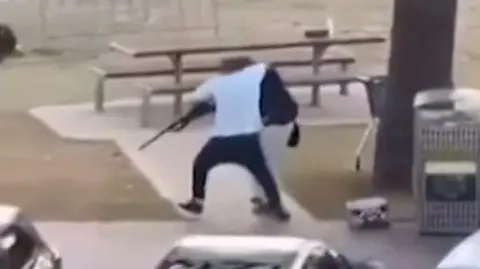 BBC
BBCA "hero" bystander who was filmed wrestling a gun from one of the Bondi Beach attackers has been named as 43-year-old Ahmed al Ahmed.
Video verified by the BBC showed Mr Ahmed run at the gunman and seize his weapon, before turning the gun round on him, forcing his retreat.
Mr Ahmed, a fruit shop owner and father of two, remains in hospital, where he has undergone surgery for bullet wounds to his arm and hand, his family told 7News Australia.
Eleven people were killed in the shooting on Sunday night, as more than 1,000 people attended an event to celebrate Hanukkah. The attack has since been declared by police as a terrorist incident targeting the Jewish community.
Mr Ahmed's cousin, Mustafa, told 7News Australia: "Still he is in hospital and we don't know exactly what is going on, the doctor says he is OK.
"We hope he is OK, he is a hero, 100% he is a hero. He has two shots, one in his arm and one in his hand, he has had to have an operation."
Two gunmen are believed to have carried out the attack, with police investigating whether others were involved. One of the gunmen was killed, with a second in "critical condition," police say.
The footage of Mr Ahmed's intervention has been shared widely online.
It shows one of the gunmen standing behind a palm tree near a small pedestrian bridge, aiming and shooting his gun towards a target out of shot.
Mr Ahmed, who was hiding behind a parked car, is seen leaping out at the attacker, who he tackles.
He manages to wrestle the gun from the attacker, pushes him to the ground and points the gun towards him. The attacker retreats.
He then lowers the weapon and raises one hand in the air, appearing to show police he was not one of the shooters.
Nearby on the bridge, another gunman continues firing. It's unclear who or what he is aiming at.
At a news conference late on Sunday, New South Wales Premier Chris Minns paid tribute to the bravery of Mr Ahmed, who was unnamed at the time.
"That man is a genuine hero, and I've got no doubt there are many, many people alive tonight as a result of his bravery."
Australian Prime Minister Anthony Albanese said: "We have seen Australians today run towards danger in order to help others.
"These Australians are heroes, and their bravery has saved lives."

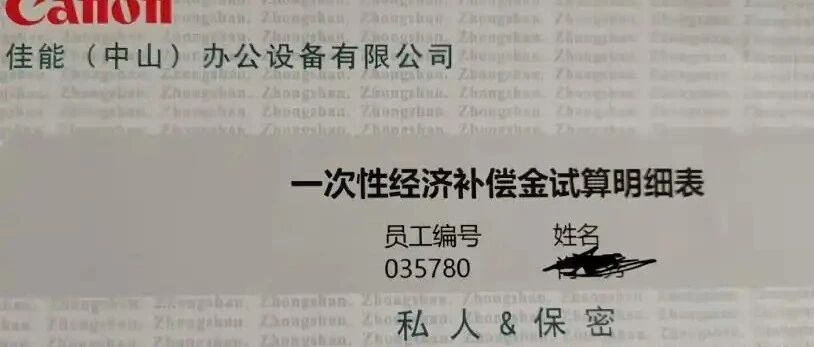
那个经典的“天问”又来了:为什么佳能肯这么“傻大方”?而我们的很多企业,一边可以给灾区捐千万(真实性待考),一边却对996加班费抠抠搜搜,裁员时又恨不得让员工“净身出户”?
前文回顾:“最忙五人组”套取500万,免职就完了?
一张银行到账短信截图,让2025年末的中文互联网提前过了个“酸辣年”。短信显示:630800元已到账,此为离职补偿金代发。发款方是佳能(中山)。
一位在佳能中山工厂干了18年的员工,在工厂停产后,收到了这笔钱。他大概是出于“这辈子头一回见这么多钱属于自己”的朴素喜悦,晒了出来。
然后,抖音一纸判书落下:“涉及刻意展示大额资产凭证,违反社区规范,予以限制。”换句话说,平台认定他“炫富”。
这可真是荒诞现实主义在中国的又一次绝佳注脚。
真正的富豪在视频里不经意地露出方向盘上的三叉星徽,背景是半山豪宅,那叫“分享美好生活”。一个工人,用18年青春换来一笔法律本应保障、但多数人从未足额见过的离职补偿,这叫“炫富”,污染社区精神。
魔幻现实就这样被一条短信点燃了。

1
我愿称之为“佳能式分手”,这是一场超标的体面告别。
我们先看看佳能这份让无数打工人酸倒后槽牙的“分手协议”到底写了什么。
据相关报道,核心就一条:2.5N+1。
别小看这几个字符。在中国《劳动合同法》里,经济补偿的法定标准通常是“N+1”(N为工龄),而且N的计算基数还有当地社会平均工资3倍的上限封顶。很多中国企业的优化艺术,就是踩着“N+1”的下限,甚至钻研“逼你自离,补偿归零”的秘籍。
但佳能说,不。我们玩真的。

如果按“2.5N+1”算,上不封顶。一个干了18年、月薪8000元的中层,这一项就是36.8万。
还有就业支援金,人人有份,再发5个月工资。
10年以上老员工,再加1.5万“感恩费”。这算特别贡献奖。
林林总总加起来,实际补偿总额接近法定标准的2.3倍。一个工龄20年的老员工,拿到63万甚至更多,是真实发生的。
佳能还附赠了“分手豪华大礼包”:董事长亲笔推荐信、专场招聘会、技能培训基金,甚至举办了隆重的结业典礼,颁发纪念章、拍全家福。
有员工哽咽着说,感觉像“体面地毕业了”。
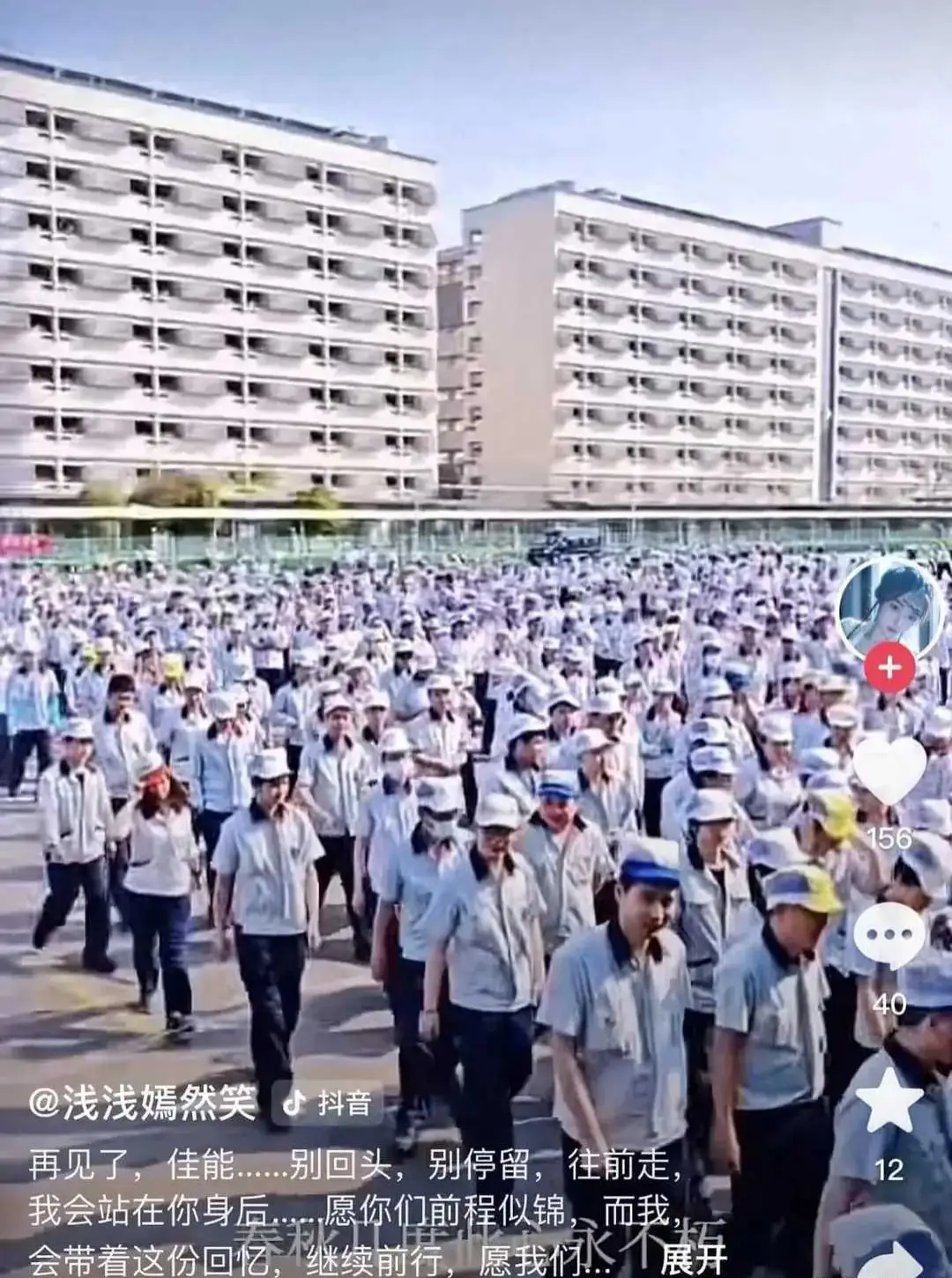
而另一边,停产后的工厂由中山国资接手改建半导体产业园,佳能还留下300万作员工转岗基金。从钱到尊严,从眼前到长远,这家日本企业给中国员工,也给中国社会,上了一堂名为“如何优雅退场”的公开课。
2
于是,那个经典的“天问”又来了:为什么佳能肯这么“傻大方”?而我们的很多企业,一边可以给灾区捐千万(真实性待考),一边却对996加班费抠抠搜搜,裁员时又恨不得让员工“净身出户”?
有人说,因为佳能是外资,利润高,给得起。这固然是部分事实,但再高能比上那些风口上的互联网大厂吗?
佳能将产能转向东南亚,是成本驱动下的全球战略调整。但“给得起”不等于“必须给”、“愿意给”。三星惠州工厂关闭时,补偿方案也远超法定标准。这背后是一种根植于成熟商业文明中的契约精神与风险定价。奔驰真是太万恶了
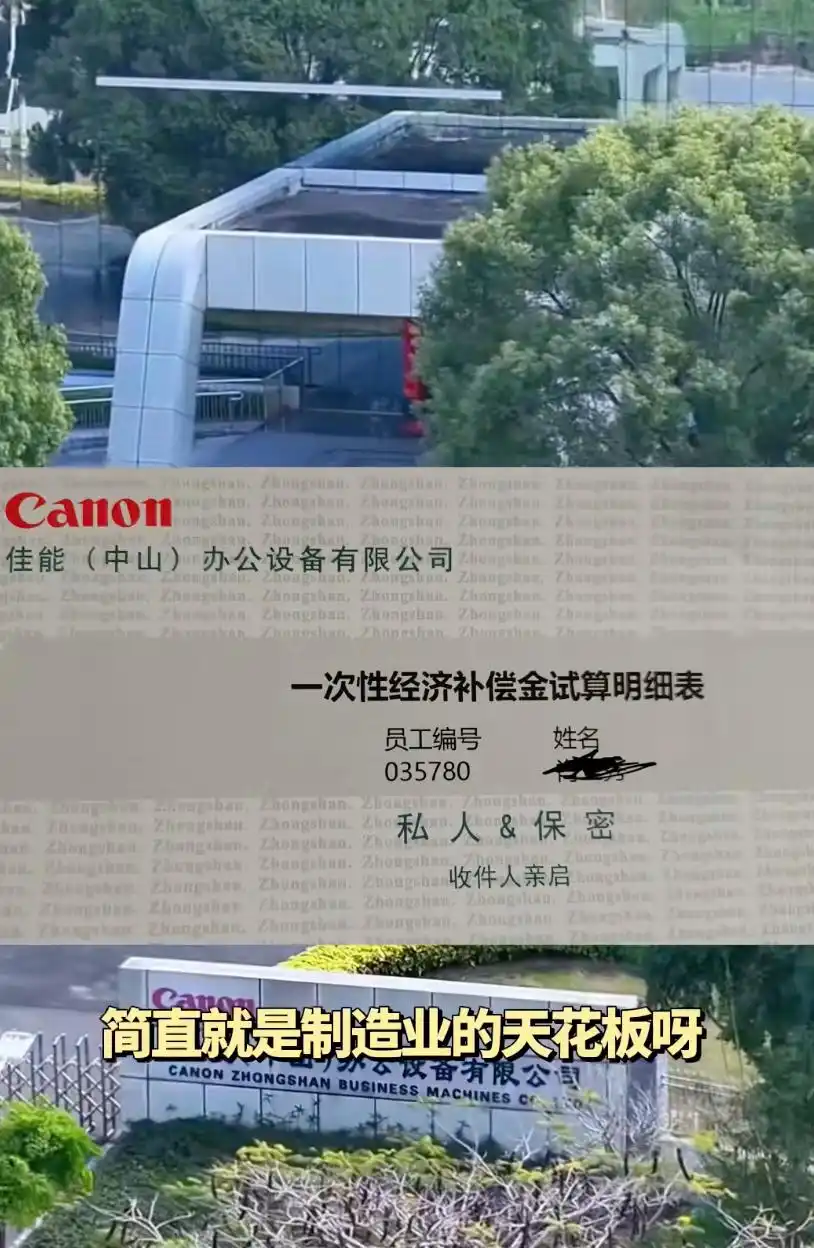
他们把对员工的安置补偿,视为企业经营必须计提的“退出成本”,是资产负债表上堂堂正正的一笔责任。这笔钱,早在关厂决定做出前,就已经准备好了。
善待员工,是正常商业伦理的一部分,而非额外的慈善。
反观我们的一些企业呢?在高速增长时,鼓吹“兄弟文化”、“福报论”,将人力资源的潜能榨取到极致。一旦风向转变,则瞬间将“兄弟”视为“负资产”,切割动作之快、之无情,令人心寒。
它们将法律底线当作天花板,将社会责任视为负担。在它们的成本核算模型里,劳动者的尊严、情感和长期付出,从来无法被量化计入,因而是可以归零的。
这不是“能不能”的问题,而是“想不想”、“认不认”的问题。佳能们把员工当“有长期价值的合作伙伴”来告别,而某些企业则始终把员工当“可替代的耗材”来处理。
这其中的温差,何止是几十万补偿金的差距?
3
最精彩的戏剧高潮,来自抖音的判定。
劳动者晒出63万补偿款——“炫富,违规”。网红晒玛莎拉蒂、爱马仕——“记录美好生活”。
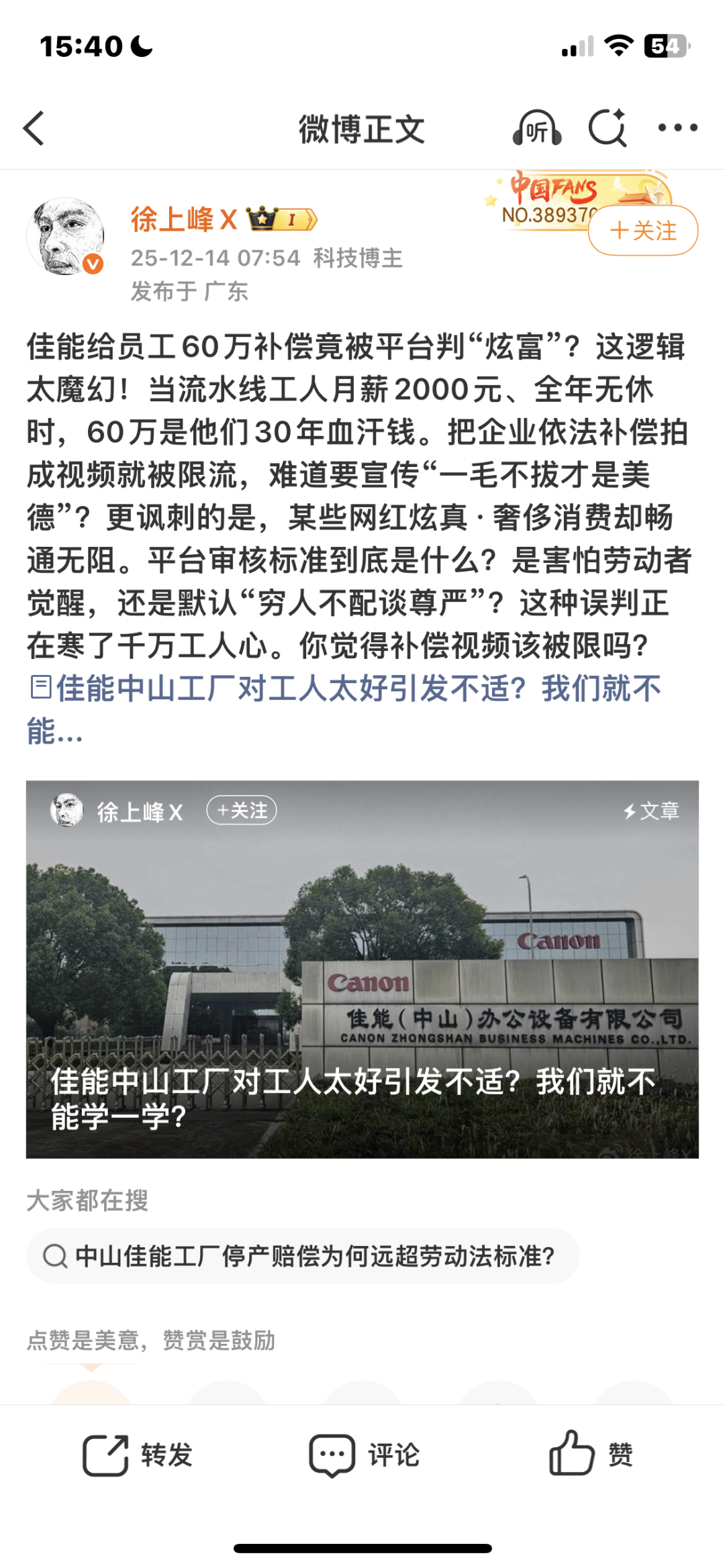
这个判定足够荒谬,精准地戳中了当下社会最敏感、最疼痛的神经:谁在定义“富”?谁的“富”值得展示,谁的“富”又该被屏蔽?
一个工人,用大半生职业生涯换来的一次性“买断”,这在平台的算法和审核员眼中,竟然构成了“炫富”,可能“误导消费观,助长唯金钱论”。
那么,天天充斥屏幕的纸醉金迷、奢华消费,误导的又是什么观?助长的又是什么论?
这暴露了平台审核标准极度的主观、随意和双标。
更深层看,这是一种隐秘的价值观筛选和规训。它似乎在无声地宣告,劳动者,你们不配展示通过法定补偿获得的“巨额”财富,你们的喜悦是粗鄙的,你们的“有钱”是刺眼的,会破坏我们精心营造的、要么是岁月静好要么是奢华顶流的“社区氛围”。
更有网友辛辣地发明了一个新词:“恶意补偿”。与“恶意讨薪”相映成趣,构成了一副绝妙的讽刺对联。你要钱,是“恶意”;他给钱,竟然也成了需要被限制的“炫富”。横批:劳动者闭嘴。
难道不应该让这样的“炫富”更多一些吗?
让佳能、三星式的“体面分手”成为常态,而非新闻!让劳动者拿到应得补偿后的喜悦笑容,刷爆每一个平台!直到算法和规则不得不承认:这不是炫富,这是一个劳动者辛勤一生后,应得的、最后的体面。
我说错了吗?

 Getty Images
Getty ImagesHong Kong pro-democracy campaigner and media tycoon Jimmy Lai has been found guilty of colluding with foreign forces under the the city's controversial national security law (NSL).
The 78-year-old, who has been in jail since December 2020, pleaded not guilty. He faces life in prison and is expected to be sentenced early next year.
Lai used his now-defunct Apple Daily newspaper as part of a wider effort to lobby foreign governments to impose sanctions on Hong Kong and China, the court found.
Hong Kong's chief executive John Lee welcomed the verdict, noting that Lai's actions "damaged the country's interests and the welfare of Hong Kongers", but rights groups called it "a cruel judicial farce".
They say the NSL, which Beijing defends as essential for the city's stability, has been used to crush dissent.
There is "no doubt" that Jimmy Lai "harboured hatred" for the People's Republic of China (PRC), Judge Esther Toh said on Monday, citing his "constant invitation to the US to help bring down the government of the PRC with the excuse of helping the people of Hong Kong".
When Lai testified in November, he denied all the charges against him, saying he had "never" used his foreign contacts to influence foreign policy on Hong Kong.
Asked about his meeting with then US Vice President Mike Pence, Lai said he did not ask anything of him: "I would just relay to him what happened in Hong Kong when he asked me."
He was also asked about his meeting with then secretary of state Mike Pompeo, to which he said he had asked Pompeo, "not to do something but to say something, to voice support for Hong Kong".
Lai, a UK citizen and one of the fiercest critics of the Chinese state, was a key figure in the pro-democracy protests that engulfed Hong Kong in 2019. Beijing responded to the months-long demonstrations, which sometimes erupted into violent clashes with police, by introducing the NSL.
The law was enacted without consulting the Hong Kong legislature and gave authorities broad powers to charge and jail people they deemed a threat to the city's law and order, or the government's stability.
Lai was accused of violating the NSL for his role in the protests and also through his tabloid Apple Daily, which became a standard bearer for the pro-democracy movement.
Monday's ruling also found Lai guilty of publishing seditious material on Apple Daily under a separate colonial-era law.
Lai appeared calm as the verdict was read out and waved goodbye to his family as he was escorted out of the courtroom. Lai's wife Teresa and one of his sons were in court, along with Cardinal Joseph Zen, a long-time friend who baptised Lai in 1997.

 Getty Images
Getty Images"Mr Lai's spirit is okay," his lawyer Robert Pang said after the verdict. "The judgement is so long that we'll need some time to study it first. I don't have anything to add at the moment." He did not say whether they would appeal.
"The Chinese government abused Jimmy Lai with the aim of silencing all those who dare to criticise the CCP [Chinese Communist Party]," said Elaine Pearson, Asia Director at Human Rights Watch, following the verdict.
"In the face of the farce of Jimmy Lai's case, governments should pressure the authorities to withdraw the case and release him immediately."
Western governments, including the UK and US, have for years called for Lai's release, which Beijing and Hong Kong have rejected.
US President Donald Trump had earlier vowed to "do everything to save" Lai while UK PM Keir Starmer had said securing his release was a "priority".
Lai's trial came to be widely seen as yet another test of judicial independence for Hong Kong's courts, which have been accused of toeing Beijing's line since 2019, when it tightened its control over the city.
Hong Kong authorities insist the rule of law is intact but critics point to the hundreds of protesters and activists who have been jailed under the NSL - and its nearly 100% conviction rate as of May this year.
Bail is also often denied in NSL cases and that was the case with Lai too, despite rights groups and Lai's children raising concerns about his deteriorating health. He has reportedly been held in solitary confinement.
Lai's son Sebastien told the BBC earlier this year that his father's "body is breaking down" - "Given his age, given his health... he will die in prison."
The Hong Kong government has also been criticised for barring foreign lawyers from working on NSL cases without prior permission. They said it was a national security risk, although foreign lawyers had operated in the city's courts for decades. Subsequently Lai was denied his choice of lawyer, who was based in the UK.
Lai now joins dozens of figures of the city's pro-democracy movement who have been sentenced to prison under the NSL.
The chief of Hong Kong's national security police addressed the media after the verdict, saying Lai had "fabricated news" in pursuit of "political goals".
On the mainland, state-run Global Times quoted a Hong Kong election committee member as saying that the case sends a "clear message": "Any attempt to split the country or undermine Hong Kong's prosperity and stability will be met with severe punishment under the law."
Lai, who was born in mainland China, fled to Hong Kong when he was 12 years old and got his footing as a businessman after founding the international clothing brand Giordano.
His journey as a democracy activist began after China brutally crushed pro-democracy protests in Beijing's Tiananmen Square in 1989.
Lai started writing columns criticising the massacre and went on to launch a string of popular pro-democracy publications, including Apple Daily and Next.
Even now, many Hong Kongers see him as a leading voice for democracy - about 80 people had queued to enter the court ahead of the verdict on Monday.
One of them was Ms Lam who didn't want to share her full name. An apple in hand, she said she started queuing around 11:00 local time on Sunday – nearly a full day before the session – because dozens of people had come before her. It was a cold night, she said, but she did it because she had wanted to wish Lai good luck.
"We all feel frustrated and powerless. Yet, there must be an ending to the whole issue and time comes when it comes," a former Apple daily journalist, who was also in court, told the BBC.
"Jimmy always said that he was indebted to Hong Kong... but I think Hong Kong and most Hong Kongers are so grateful to have him upholding the core values, good faith and integrity for the community at the expense of his well being and personal freedom."
In his testimony, Lai had said that he had "never allowed" his newspaper's staff to advocate for Hong Kong independence, which he described as a "conspiracy" and "too crazy to think about".
"The core values of Apple Daily are actually the core values of the people of Hong Kong," he had said. These values, he added, include the "rule of law, freedom, pursuit of democracy, freedom of speech, freedom of religion, freedom of assembly".